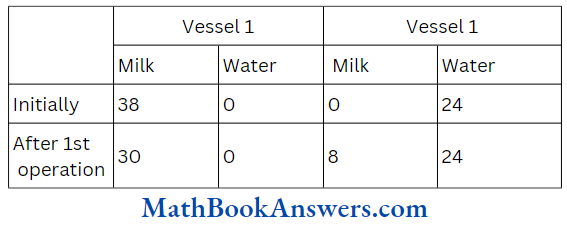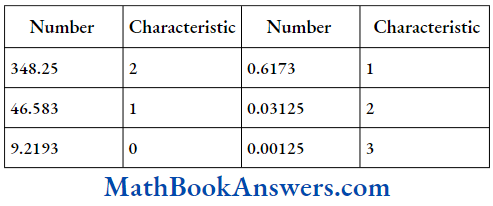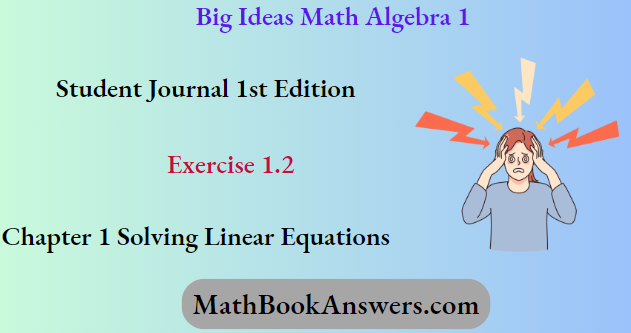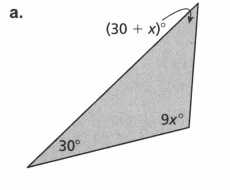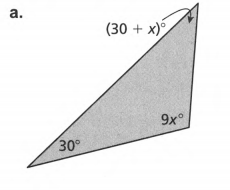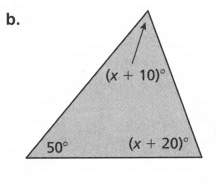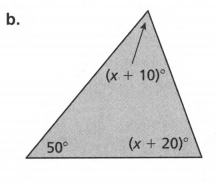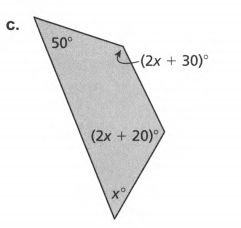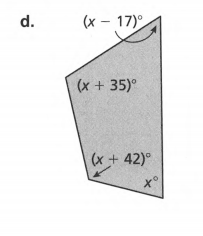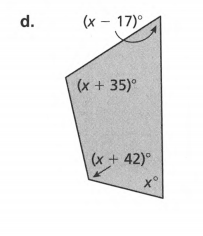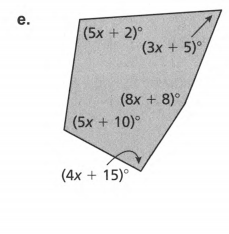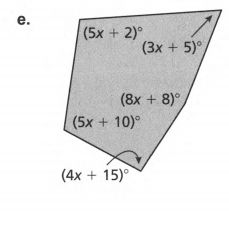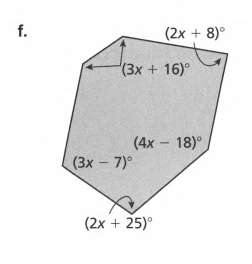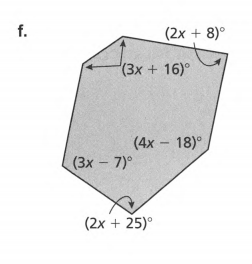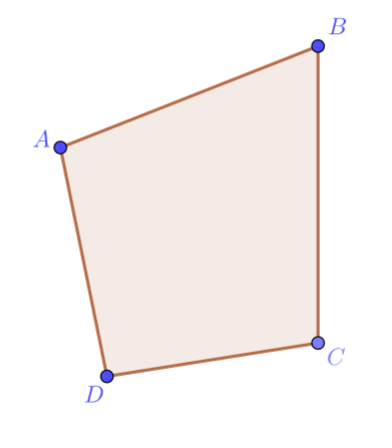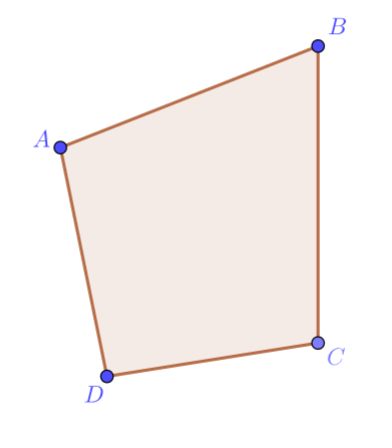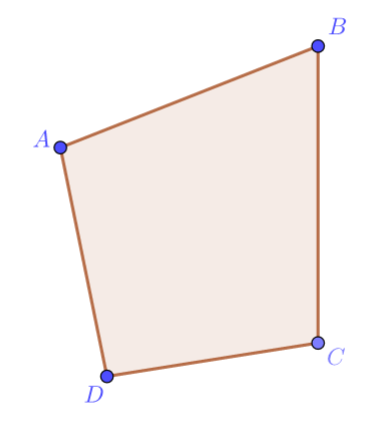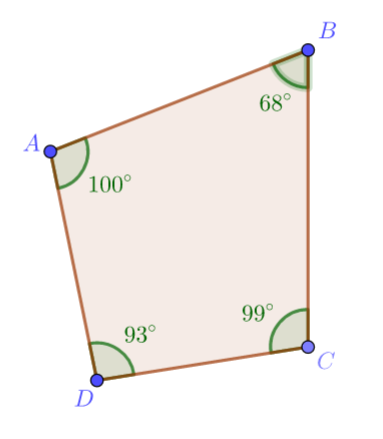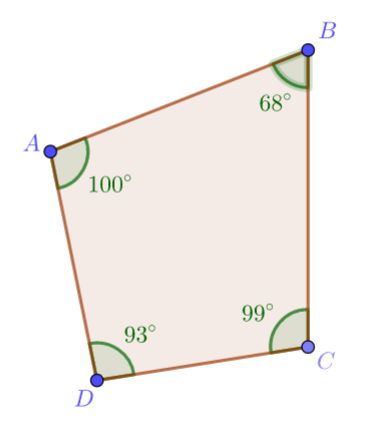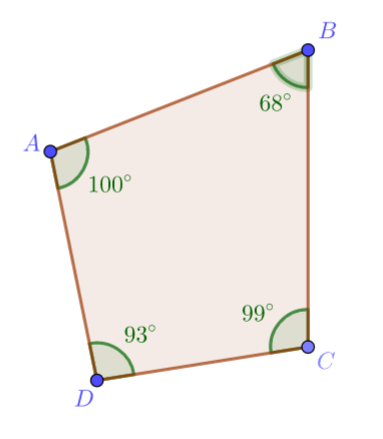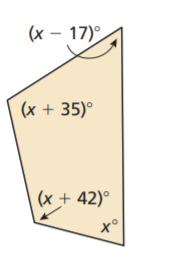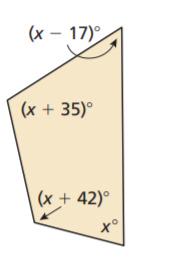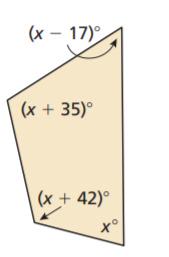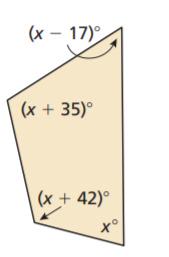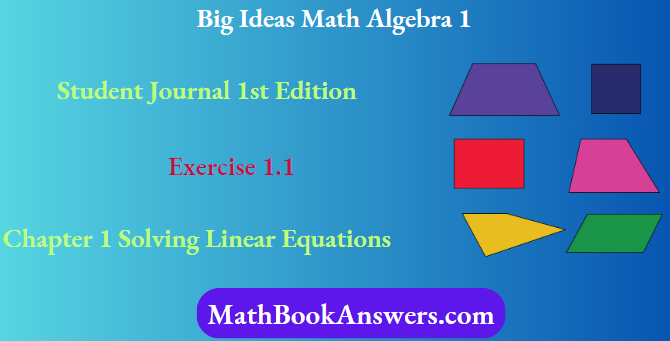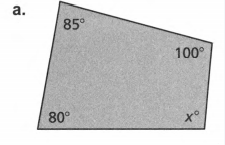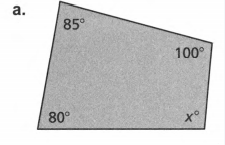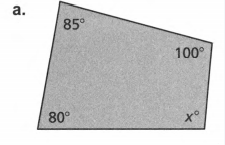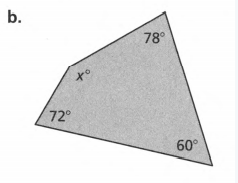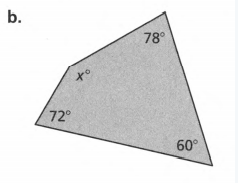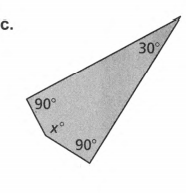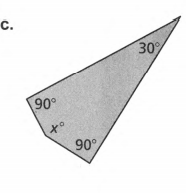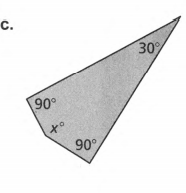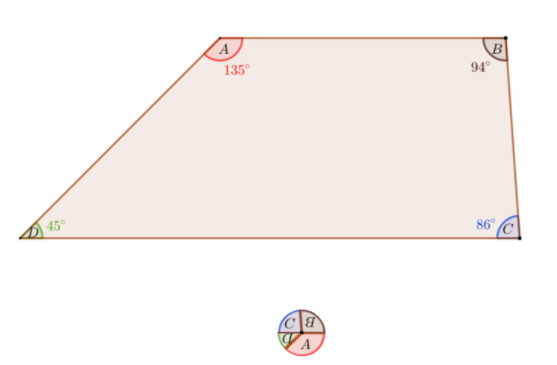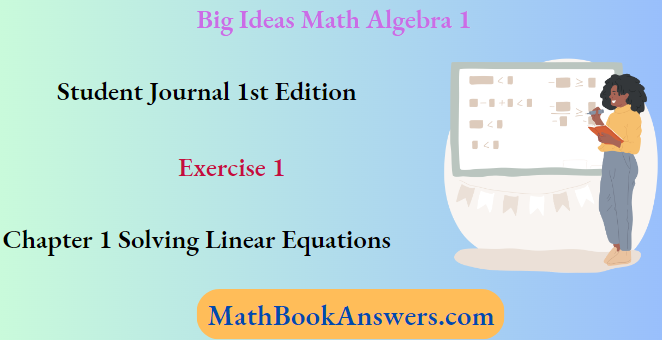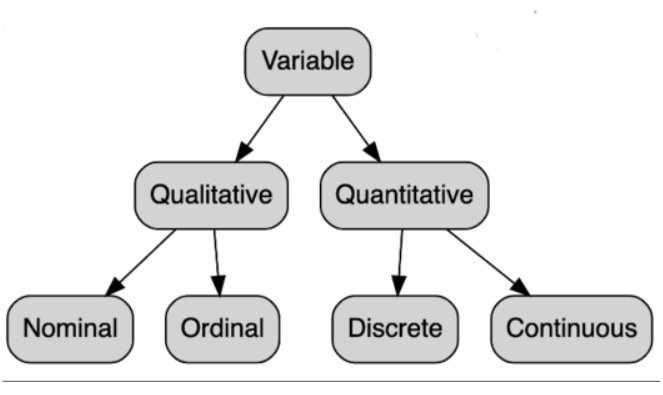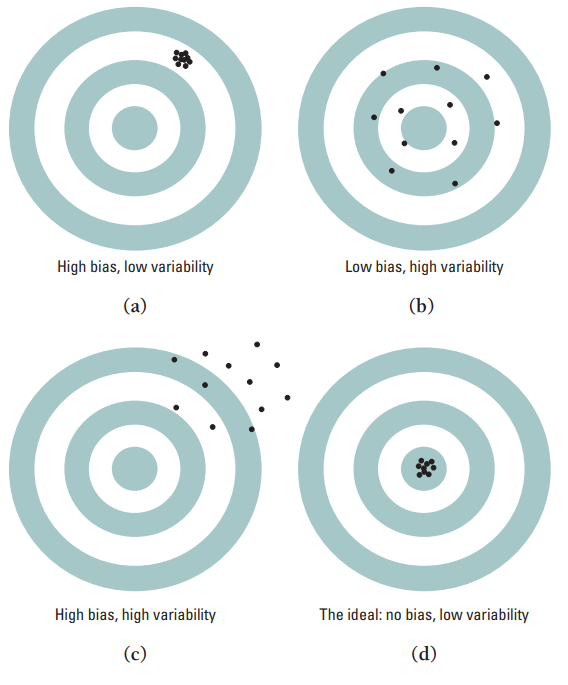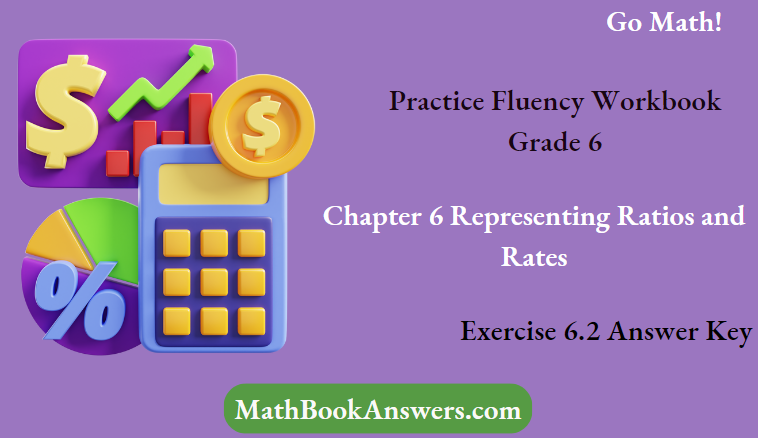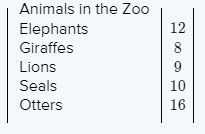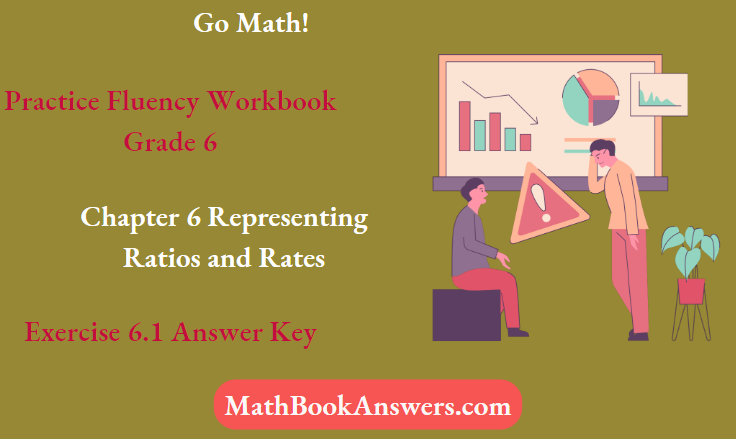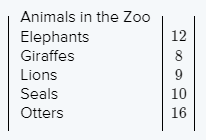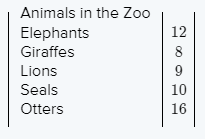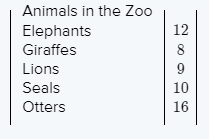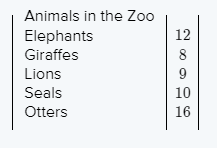CA Foundation Maths Solutions For Chapter 4 Time Value of Money Introduction
People can’t make money or spend it on housing. food, clothing, education, entertainment, etc. Sometimes extra expenditures have also to be met. For example, there might be a marriage in the family; one may want to line house, one may want to set up his or her business, one may want to have a car, and so on.
- Some people can manage to put aside some money for such expected and unexpected expenditures. But most people have to borrow money for such contingencies.
- From where they can borrow money? Money can be borrowed from friends money lenders or Banks.
- If you can arrange a loan from your friend it might be interest-free but if you borrow money from lenders or Banks you will have to pay some charge periodically for using money from money lenders or Banks. This charge is called interest.
- Interest can be defined as the price paid by a borrower for the use of a lender’s money.
Why is Interest Paid?
- Time value of money: The time value of money means that the value of the unity of money is different in different periods. The sum of money received in the future is less valuable than it is today. In other words, the present worth of money received after some time will be less than the money received today. Since money received today has more value rational investors would prefer current receipts to future receipts. If they postpone their receipts, they will certainly charge some money i.e., interest.
- Opportunity Cost: The lender has a choice between using his money in different investments. If he chooses one, he forgoes the return from all others. In other words, lending incurs an opportunity cost due to the possible alternative uses of the lent money.
- Inflation: Most economies generally exhibit inflation. Inflation is a fall in the purchasing power of money. Due to inflation a given amount of money buys fewer goods in the future than it will now. The borrower needs to compensate the lender for this.
- Liquidity Preference: People prefer to have their resources available in a form that can immediately be converted into cash rather than a form that takes time or money to realize.
- Risk Factor: There is always a risk that the borrower will go bankrupt or otherwise default on the loan. Risk is a determinable factor in fixing the rate of interest
Read and Learn More CA Foundation Maths Solutions
CA Foundation Maths Solutions For Chapter 4 Simple Interest
- If the interest on a sum borrowed for a certain period is reckoned uniformly, then it is called Simple Interest.
- Simple interest is the interest computed on the principal for the entire period of borrowing.
- It is calculated on the outstanding principal balance and not on interest previously earned. It means no interest is paid on interest earned during the term of the loan.
Simple Interest – Important Facts and Formulae:
Principal: The money borrowed or lent out for a certain period is called the principal or the sum.
Interest: Extra money paid for using other’s money is called interest.
Simple Interest (S.I.): If the interest on a sum borrowed for a certain period is reckoned uniformly, then it is called simple interest.
Let Principal = P, Rate = R% per annum (p.a.), and Time = T years. Them
⇒ \(\text { S.I. }=\left(\frac{P \times R \times T}{100}\right)\)
⇒ \(\mathrm{P}=\left(\frac{100 \times 5 . I}{R \times T}\right) \)
⇒ \(\mathrm{R}=\left(\frac{100 \times 5 . I}{P \times T}\right)\)
⇒ \(\mathrm{T}=\left(\frac{100 \times 5 . I}{P \times R}\right)\)
If
A = Accumulated amount
[Final value of investment]
P = Principal. [Initial value of an investment]
r= Rate of interest
t = time (years.]
I = Amount interest
A = P + I
I = A – P
⇒ \(\mathrm{A}=\mathrm{P}\left(1+\frac{1 t}{100}\right)\)
CA Foundation Maths Chapter 4 Time Value Of Money Solutions
Solved Sums with Solution:
Question 1. Find the simple interest on Rs. 651000 at \(16 \frac{2}{3} \%\)per annum for 9 months.
Solution:
⇒ \(\mathrm{P}=\mathrm{Rs} 68000, \mathrm{R}=\frac{50}{3} \% \text { p.a and } \mathrm{T}=\frac{9}{12} \text { Years }=\frac{3}{4} \text { years. }\)
⇒ \(\mathrm{S} .1 .=\left(\frac{P \times R \times S}{100}\right)=R s .\left(68000 \times \frac{50}{3} \times \frac{3}{4} \times \frac{1}{100}\right)=R s .8500 \)
Question 2. Find the simple interest on Rs. 3000 at 6ÿ% per annum for the period from 4″’ Fell., 2005 to 18 th April, 2005.
Solution:
⇒ \(\text { Time }=(24+31+18) \text { days= } 73 \text { days }=\frac{73}{365} \text { year }=\frac{1}{5} \text { year. }\)
⇒ \(P=\text { Rs. } 3000 \text { and } R=6 \frac{1}{4} \% \text { p.a. }=\frac{25}{4} \% \text { p.a. }\)
⇒ \(\text { S.I. }=\text { Rs. Rs. }\left(3000 \times \frac{25}{4} \times \frac{1}{5} \times \frac{1}{100}\right)=\text { Rs. } 37.50 \)
Remark: the day on which money is deposited is not counted while the day on which money is withdrawn is counted.
Question 3. A sum at simple interest at 131/2% per annum amounts to Rs. 2502.50 after 4 years, find the sum.
Solution:
Let the sum be Rs. X then, S.l. = Rs\(\left(x \times \frac{27}{2} \times 4 \times \frac{1}{100}\right)={Rs} . \frac{27 x}{50}\)
⇒ \(\frac{77 x}{50}=250250 \Leftrightarrow x=\frac{250250 \times 50}{77}=1625 .\)
Question 4. A sum of Rs. 800 amounts to Rs. 920 in 3 years at simple interest. If the interest rate is increased by 3%, it would amount to how much?
Solution:
S.l. =Rs. (920 – 800) = Rs. 120; P=Rs. 800, T= 3 yrs.
⇒ \(\mathrm{R}=\left(\frac{100 \times 120}{800 \times 3}\right) \%=5 \% \)
⇒ \(\text { New rate }=(5+3) \%=8 \%\)
⇒ \(\text { New S.I. }=\text { Rs. }\left(\frac{800 \times 8 \times 3}{100}\right)=\text { Rs. } 192\)
New amount – Rs. (800+192) = Rs. 992.
Question 5. Adam borrowed some money at the rate of 6% p.a. for the first two years, at the rate of 9% p.a. for the next three years, and at the rate of 14% p.a. for the period beyond five years, If he pays a total interest of Rs. 11,400 at the end of nine years, how much money did he borrow?
Solution:
Let the sum borrowed be x. then,
⇒ \(\left(\frac{x \times 6 \times 2}{100}\right)+\left(\frac{x \times 9 \times 3}{100}\right)+\left(\frac{x \times 14 \times 4}{100}\right)=11400\)
⇒ \(\Leftrightarrow\left(\frac{3 x}{25}+\frac{27 x}{100}+\frac{14 x}{25}\right)=11400 \Leftrightarrow \frac{95 x}{100}=11400 \Leftrightarrow\left(\frac{11400 \times 100}{95}\right)=12000\)
Hence, sum borrowed = Rs. 12,000
Question 6. A certain sum of money amounts to Rs. 1008 in 2 years and to Rs. 1164 in 31/2 years find the sum and the rate of interest.
Solution:
⇒ \(\text { S.I. for } 1 \frac{1}{2} \text { years }=\text { Rs. }(1164-1008)=\text { Rs. } 156 .\)
⇒ \(\text { S.I. for } 2 \text { years }=\text { Rs. }\left(156 \times \frac{2}{3} \times 2\right)=\text { Rs. } 208 \text {. }\)
⇒ \(\text { Principal= Rs. }(1008-208)=\text { Rs. } 800 .\)
⇒ \(\text { Now, } P=800, T=2 \text { and S.I. }=208\)
⇒ \(\text { Rate }=\left(\frac{100 \times 208}{800 \times 2}\right) \%=13 \% .\)
Question 7. At what rate present per annum will a sum of money double in 16 years?
Solution:
Let principals P. then, S.l. = P and T = 16yrs.
⇒ \(\text { Rate }=\left(\frac{100 \times P}{P \times 16}\right) \%=6 \frac{1}{4} \% p . a .\)
Question 8. The simple interest on a sum of money is \(\frac{4}{9}\) of the principal, find the rate present and time, if both are numerically equal.
Solution:
Let sum =Rs. x. then, S.L =Rs.\(\frac{4 x}{9}\)
Let rate = R % and time = R years.
Then\(\left(\frac{x \times R \times R}{100}\right)=\frac{4 x}{9} \text { or } R^2=\frac{400}{9} \text { or } R=\frac{20}{3}=6 \frac{2}{3}\)
⇒ \(\text { Rate }=6 \frac{2}{3} \% \text { and time }=6 \frac{2}{3} y \text { rs }=6 \text { yrs } 8 \text { Months. }\)
Question 9. The simple interest on a certain sum of money for 2ÿ years at 12% per annum is Rs.40 less than the simple interest on the same sum for 3 years at 10% per annum. Find the sum.
Solution:
Let the sum be Rs. X. then,\(\left(\frac{x \times 10 \times 7}{100 \times 2}\right)-\left(\frac{x \times 12 \times 5}{100 \times 2}\right)=40\).
⇒ \(\frac{7 x}{20}-\frac{3 x}{10}=40 \Leftrightarrow x=(40 \times 20)=800 \text {. }\)
Hence, the sum is Rs.800.
Question 10. A sum was put at simple interest at a certain rate for 3 years. Had it been put at 2% higher rate, it would have fetched Rs. 360 more. Find the sum.
Solution:
Let sum= P and original rate= R. then,\(\left[\frac{P \times(R+2) \times 3}{100}\right]-\left[\frac{P \times R \times 3}{100}\right]=360\)
3PR + 6P – 3PR =36000« 6P =36000o P =6000
Hence, sum =Rs. 6000.
Time Value Of Money Chapter 4 CA Foundation Answers
CA Foundation Maths Solutions For Chapter 4 Exercise – 1
Question 1. A person borrows Rs. 5000 for 2 years at 4% p.a. simple interest; He immediately lends it to another person at \(6 \frac{1}{4} \%\) p.a. for 2 years. Find his gain in the transaction per year.
- Rs. 112.50
- Rs. 125
- Rs. 150
- Rs. 29
Solution:
⇒ \( \text { Gain in } 2 \text { yrs. }=\text { Rs. }\left[\left(5000 \times \frac{25}{1} \times \frac{2}{100}\right)-\left(\frac{5000 \times 4 \times 2}{100}\right)\right]=\text { Rs. }(625.400)=\text { Rs. } 225\)
⇒ \(\text { Gain in } 1 \text { year }=\text { Rs. }\left(\frac{225}{2}\right)=\text { Rs. } 112.50 .\)
Question 2. How much time will it take for an amount of Rs. 450 to yield Rs.81 as interest at 4.5% per annum of simple interest?
- 3.5 years
- 4 years
- 4.5 years
- 5 years
Solution:
⇒ \(\text { Time }=\left(\frac{100 \times 81}{150 \times 4.5}\right) \text { years }=4 \text { years. }\)
Question 3. A sum of Rs. 12,500 amounts to Rs.15, 500 in 4 years at the rate of simple interest what is the rate of interest?
- 5%
- \(6 \frac{1}{4} \%\)
- \(6 \frac{1}{4} \%\)
- \(6 \frac{3}{4} \%\)
Solution:
S.l.= Rs. (15500-12500] =Rs.3000.
⇒ \(\text { Rate }=\left(\frac{100 \times 3000}{12500 \times 4}\right) \%=6 \% \% .\)
Question 4. Reena took a loan of Rs. 1200 with simple interest for as many years as the rate of interest. If she paid Rs. 432 as interest at the end of the loan period, what was the rate of interest?
- 3.6
- 6
- Cannot be determined
- None of these
Solution:
Let rate = R% and time = R years. Then,
⇒ \(\left(\frac{1200 \times R \times R}{100}\right)=432 \Leftrightarrow \quad 12 R^2=432 \quad \Leftrightarrow \quad R^2=\quad 36 \Leftrightarrow \mathrm{R}=6\)
Question 5. A man took a loan from a bank at the rate of 12% p.a. simple interest. After 3 years he had to pay Rs.5400 interest only for the period. The principal amount borrowed by him was:
- Rs 2000
- Rs 10,000
- Rs 15,000
- Rs. 20,000
Solution:
⇒ \(\text { Principal }=\text { Rs. }\left(\frac{100 \times 5100}{12 \times 3}\right)=\text { Rs. } 15000 .\)
Question 6. What is the present worth of Rs.132 due in 2 years at 5% simple interest per annum?
- Rs. 112
- Rs. 118.80
- Rs. 15,000
- Rs. 122
Solution:
Let the present worth be Rs. x, then, S.l. =Rs. (132-x).
⇒ \( \left(\frac{x \times 5 \times 2}{100}\right) 132-x \Leftrightarrow 10 x=13200-100 x \Leftrightarrow 110 x=13200 \Leftrightarrow x=120 \)
Question 7. A sum fetched a total simple interest of Rs. 4016.25 at the rate of 9 p. c. p.a. in 5 years. What is the sum?
- Rs. 4462.50
- Rs. 8032.50
- Rs. 8900
- Rs. 8925
- None of these
Solution:
⇒ \(\text { principal }=\text { Rs. }\left(\frac{100 \times 4016.25}{9 \times 5}\right)={Rs} .\left(\frac{401625}{45}\right)={Rs} .8925 .\)
Question 8. Rs. 800 becomes Rs. 956 in 3 years at a certain rate of simple interest, if the rate ofinterest is increased by 4%, what amount will Rs. 800 become in 3 years?
- Rs. 1020.80
- Rs 1025
- Rs. 1052
- Data inadequate
- None of these
Solution:
S.l. = Rs. (956-800) = Rs. 1 56.
⇒ \(\text { Rate }=\left(\frac{100 \times 156}{800 \times 3}\right) \%=6 \frac{1}{2} \%\)
⇒ \(\text { New rate }=\left(6 \frac{1}{2}+4\right) \%=10 \frac{1}{2} \%\)
⇒ \(\text { New S.I. }=\text { Rs. }\left(800 \times \frac{21}{2} \times \frac{3}{100}\right)=\text { Rs. } 252\)
New amount =Rs.(800+252)= Rs.1052
Question 9. A certain amount earns a simple interest of Rs.1750 after 7 years. Had the interest been 2% more, how much more interest would it have earned?
- Rs. 35
- Rs. 245
- Rs. 350
- Cannot be determined
- None of these
Solution:
We need to know the S.I. principal and time to find the rate since the principal is not given, so data is inadequate.
Question 10. In how many years, Rs. 150willproduce the same interest @ 8%as Rs.800 produce in 3 years \(\text { @ } 4 \frac{1}{2} \% \text { ? }\)
- 6
- 8
- 9
- 12
Solution:
P= Rs 800, R=4ÿ% = %, T = 3 years, then,
\(\text { S.I. }=\text { Rs. }\left(800 \times \frac{9}{2} \times \frac{3}{100}\right)=R s .108 .\)Now, P =Rs. 150, S.l. = Rs. 108, R= 8%
⇒ \(\text { Time }=\left(\frac{100 \times 108}{150 \times 8}\right) \text { years }=9 \text { years. }\)
Question 11. A sum invested at 5% simple interest per annum grows to Rs. 504 in 4 years. The same amount at 10% simple interest per annum in 2ÿyears will grow to:
- Rs. 420
- Rs. 450
- Rs. 525
- Rs. 550
Solution:
let the sum be Rs. X. then, S.l. = Rs.(504-x).
⇒ \(\left(\frac{x \times 5 \times 4}{100}\right)=504 \cdot \mathrm{x} \Leftrightarrow 20 \mathrm{x}=50400-100 \mathrm{x} \Leftrightarrow 120 \mathrm{x}=50400 \Leftrightarrow \mathrm{x}=420\)
Now, P= Rs. 420, R= 10%. \(\mathrm{T}=\frac{5}{2} \text { years. }\)
⇒ \({\text { S.I. }=Rs} .\left(\frac{420 \times 10}{100} \times \frac{5}{2}\right)={Rs} .105\)
Amount = Rs, (420+105] = Rs. 525.
Question 12. What will be the ratio of simple interest earned by a certain amount at the same rate of interest for 6 years and that for 9 years?
- 1 : 3
- 1: 4
- 2 : 3
- Data inadequate
- None Of these
Solution:
Let the principal boI’ ami rale ol interest be R%
Required ratio \(=\left\lfloor\frac{\frac{P \times R \times 6}{100}}{\frac{P\times R\times 9}{100}}\right\rfloor=\frac{6 PR}{9 P R}=\frac{6}{9}=2: 3\)
Question 13. Nitin borrowed some money at the rate of 6% p.a. for the first three years, 9% p.a. for the next five years, and 13% p.a. for the period beyond eight years, If the total interest paid by him at the end of eleven years is Rs. 8160, how much money did he borrow?
- Rs. 8000
- Rs. 10,000
- 12,000
- Data inadequate
Solution:
let the sum to Its. X. Then,
⇒ \(\left(\frac{x \times 6 \times 3}{100}\right)+\left(\frac{x \times 9 \times 5}{100}\right)+\left(\frac{x \times 13 \times 3}{100}\right)=8160\)
18x+45x+39x=(8 1 60 x 100) <=> 102x = 816000 <=> x = 8000.
Question 14. An automobile financier claims to be lending money at simple interest, but he includes the interest every six months for calculating the principal. If he is charging an interest of 10% the effective rate of interest becomes:
- 10%
- 10. 25%
- 10.5%
- None of these
Solution:
Let the sum be Rs. 100 then
S.I. for first 6 months Rs.\(\text { Rs. }\left(\frac{100 \times 10 \times 1}{100 \times 2}\right)={Rs} .5\)
S.l. for last 6 months= Rs.\(\left(\frac{105 \times 10 \times 1}{100 \times 2}\right)=Rs .5 .25\)
So, the amount at the end of 1 year is Rs. (100+5+5.25)= Rs.110.25.
Effective rate = (110.25-100)= 10.25 %
Question 15. A sum of money at simple interest amounts to Rs. 815 in 3 years and to Rs.854 in 4 years. The sum is:
- Rs. 650
- Rs. 690
- Rs. 698
- Rs 700
Solution:
S.l. for 1 year= RS. (854-815)=Rs.39.
S.l. for 3 Years= RS.(39 x 3) = Rs.117.
Principal = Rs.( 815 -117) = Rs. 698.
Question 16. A sum of money lent out at simple interest amounts to Rs. 720 after 2 years and to Rs. 1020 after a further period of 5 years. The sum is:
- Rs. 500
- Rs. 600
- Rs. 700
- Rs. 710
Solution:
S.I. for 5 years RS. (1020-720)=Rs.300
S.I. for 2 Years=\(\text { RS. }\left(\frac{300}{5} \times 2\right)={Rs} .120\)
Principal = Rs.( 720 -120) = Rs. 600.
Question 17. A sum of money amorist to Rs. 9800 after 5 years and Rs. 12005 after 8 years at the same rate of simple interest, the rate of interest per annum is:
- 5%
- 8%
- 12%
- 15%
Solution:
S.I. for 3 years RS. (12005-9800)=Rs.2205
⇒ \(\text { S.I. for } 5 \text { Years }=\text { RS. }\left(\frac{2205}{3} \times 5\right)=\text { Rs. } 3675 \text {. }\)
⇒ \(\text { Principal }=\text { Rs. }(9800-3675)=\text { Rs. } 6125 \text {. }\)
⇒ \(\text { Hence, rate }=\left(\frac{100 \times 3675}{6125 \times 5}\right) \%=12 \%\)
Question 18. At what rate present of simple interest will a sum of money double itself in 12 years?
- \( 8 \frac{1}{4} \%\)
- \( 8 \frac{1}{3} \%\)
- \( 8 \frac{1}{2} \%\)
- \( 9 \frac{1}{2} \%\)
Solution:
Letsum=x. then, S.l. = x
⇒ \(\text { Rate }=\left(\frac{100 \times S . J}{P \times T}\right)=\left(\frac{100 \times x}{x \times 12}\right) \%=\frac{25}{3} \%=8 \frac{1}{3} \%\)
Question 19. At what rate present per annum will the simple interest sum of money be \(\frac{2}{5}\) of the amount in 10 years?
- 4%
- \(5 \frac{2}{3} \%\)
- 6%
- \(6 \frac{2}{3} \%\)
Solution:
Let sum= x. then, S.I. =\(\frac{2 x}{5} \text { Time }=10 \text { Years. }\)
⇒ \(\text { Rate }=\left(\frac{100 \times 2 x}{x \times 5 \times 10}\right) \%=4 \%\)
Question 20. In how much time would the simple interest on a certain sum be 0.125 times the principal at 10% per annum?
- \(1 \frac{1}{4}years\)
- \(1 \frac{3}{4}years\)
- \(2 \frac{1}{4}years\)
- \(2 \frac{3}{4}years\)
Solution:
Let sum= x. then, S.l. = 0.125x=\(\frac{1}{8} x, R=10 \%\)
⇒ \(\text { Time }=\left(\frac{100 \times x}{x \times 8 \times 10}\right) \text { Years }=\frac{5}{4} \text { Years }=1 \frac{1}{4} \text { Years }\)
Question 21. A sum of money becomes of itself in 3 years at a certain rate of simple interest the rate annum is:
- \(5 \frac{5}{9} \%\)
- \( 6 \frac{5}{9} \%\)
- 18%
- 25%
Solution:
Let sum= x. then, Amount=\(\frac{7 x}{6}, \mathrm{~S} . \mathrm{I}=\left(\frac{7 x}{6}-x\right)=\frac{x}{6} ;\)
Time = 3 Years
⇒ \(\text { Rate }=\left(\frac{100 \times x}{x \times 6 \times 3}\right) \%=\frac{50}{9} \%=5 \frac{5}{9} \%\)
Question 22. Simple Interest on a certain amount is \(\frac{9}{16}\)of the principal. If the numbers representing principal are lent out, is:
- \(5 \frac{1}{2}years\)
- \( 6 \frac{1}{2}years\)
- 7 years
- \(7 \frac{1}{2}years\)
Solution:
let sum = x. tlum, S.l. \(=\frac{9}{16} x\)
Let rate= R % and Time = R years
⇒ \(\left(\frac{x \times R \times R}{100}\right)=\frac{9 x}{16} \Leftrightarrow R^2=\frac{900}{16} \Leftrightarrow R=\frac{30}{4}=7 \frac{1}{2}\)
Hence, time = \(7 \frac{1}{2} \text { Years. }\)
Question 23. A lends Rs. 2500 to B and a certain sum to C at the same time at 7% p.a. simple Interest. If after 4 years, A altogether receives Rs. 1120 as interest from B and C, then the sum lent to C is:
- Rs. 700
- Rs. 1500
- Rs. 4000
- Rs. 6500
Solution:
Let the sum lent to C he Rs. X. then,\(\left(\frac{2500 \times 7 \times 4}{100}\right)+\left(\frac{x \times 7 \times 4}{100}\right)=1120\)
⇒ \( \Leftrightarrow \quad \frac{7}{25} x=(1120-700) \Rightarrow x=\left(\frac{420 \times 25}{7}\right)=1500\)
CA Foundation Maths Chapter 4 Detailed Solutions
Question 24. A lent Rs.5000 for 2 years and Rs. 300 for 4 years on simple interest at the same rate of interest and received Rs. 2200 in all from both of them as interest. The rate of interest per annum is:
- 5%
- 7%
- 71 %
- 10%
Solution:
Let the rate be R% p.a. then,\(\left(\frac{5000 \times R \times 2}{100}\right)+\left(\frac{3000 \times R \times 4}{100}\right)=2200\)
⇒ \(\Leftrightarrow \quad 100 R+120 R=2200 \Leftrightarrow R=\left(\frac{2200}{220}\right)=10 \text { Rate }=10 \%\)
Question 25. A sum of Rs 725 is lent at the beginning of a year at a certain rate of interest. After 8 months, a sum of Rs. 362.50 more is lent but at the rate twice the former at the end of the year, Rs.33.50 is earned as interest from both the loans. What was the original rate of interest?
- 3.6%
- 4.5%
- 5%
- 6%
- None
Solution:
Let the original rate be R% then, the new rate = (2R) %.
⇒ \(\left(\frac{725 \times R \times 1}{100}\right)+\left(\frac{36250 \times 2 R \times 1}{100 \times 3}\right)=33.50\)
(2175+725) R= 33.50x 100 x 3=10050 \(\Leftrightarrow \quad R=\frac{10050}{2900}=3.46\)
Original rate = 3.46%
Question 26. The difference between the simple interest received from two different sources on Rs. 1500 for 3 years is Rs. 13.50 the difference between their rates of interest is:
- 0.1%
- 0.2%
- 0.3%
- 0.4%
- None
Solution:
⇒ \(\left(\frac{1500 \times R_1 \times 3}{100}\right)-\left(\frac{1500 \times R_2 \times 3}{100}\right)=13.50\)
4500 (R1 – R2) = 1350o (R1 – R2)=\(=\frac{1350}{4500}=0.3 \%\)
Question 27. Peter invested an amount of 12000 at the rate of 10 p.c.p.a. simple interest and another amount at the end of 20 p.c.p.a. simple interest. The total interest earned at the end of one year on the total amount invested became 14 p.c.p.a. Find the total amount invested.
- Rs. 20,000
- Rs. 22,000
- Rs 24,000
- Rs. 25,000
- None
Solution:
Let the second amount be RS. X. Then,
⇒ \(\left(\frac{12000 \times 10 \times 1}{100}\right)+\left(\frac{x \times 20 \times 1}{100}\right)=\left[\frac{(12000+x) \times 14 \times 1}{100}\right]\)
12000+20x=1 68000+14x ⇔ 6x= 48000 ⇔ x = 8000
Total investment = Rs. (12000+8000) = Rs. 20000
Question 28. If the annual rate of simple interest increases from 10 % to \(12 \frac{1}{2}\) % a man’s yearly income increases by Rs. 1250 His principal (in Rs.) is:
- 45,000
- 50,000
- Rs. 24,600
- Rs. 26,000
Solution:
Let the sum be Rs. X, then,\(\left(x \times \frac{25}{2} \times \frac{1}{100}\right)-\left(\frac{x \times 10 \times 1}{100}\right)=1250\)
⇔ 25x-20x = 250000 ⇔ 5x = 250000 o x = 50000
Question 29. A moneylender finds that due to a fall in the annual rate of interest from 8% to 7- %, his 4 yearly income diminishes by Rs. 61.50 His capital is:
- Rs. 22,400
- Rs. 23,800
- Rs. 24,600
- Rs. 26,000
Solution:
Let the capital be Rs. X, then,\(\left(\frac{x \times 8 \times 1}{100}\right)-\left(x \times \frac{31}{4} \times \frac{1}{100}\right)=61.50\)
32x- 31x = 6150x 4 o x = 24600
Question 30. The price of a T.V. set worth Rs. 20,000 is to be paid in 20 installments of Rs. 1000 each. If the rate of interest is 6 per annum, and the first installment is paid at the time of purchase, then the value of the last instalment covering the interest as well will be:
- Rs. 1050
- Rs. 2050
- Rs. 3000
- None of these
Solution:
Money paid in cash = Rs. 1000. Balance payment = Rs. (20000-1000) = Rs. 19000.
Question 31. Mr. Thomas invested an amount of Rs. 13900 divided into two different schemes A and B at the simple interest earned in 2 years Rs. 3508, what was the amount invested in scheme B?
- Rs. 6400
- Rs. 6500
- 7200
- Rs. 7500
- None
Solution:
Let the sum invested in scheme A be Rs. X and that in scheme B be Rs. (13900 – x).
⇒ \(\text { Then, }\left(\frac{x \times 14 \times 2}{100}\right)+\left[\frac{13900-x) \times 11 \times 2}{100}\right]=3508\)
28x- 22x = 350800 – (13900 x 22) cs 6x = 45000 ⇔ x = 7500.
Question 32. An amount of Rs. 100000 is invested in two types of shares. The first yields an interest of 9% p.a. and the second, 11% p.a. If the total interest at the end of one year is, 9% then the amount invested in each share was:
- Rs. 52,500; Rs. 47,500
- Rs. 62,500; Rs. 37,500
- Rs. 72,500; Rs. 27,500
- Rs. 82,500; Rs. 17,500
Solution:
Let the sum invested at 9% be Rs. X and that invested at 11% be Rs. (100000 – x)
Then, \(\left(\frac{x \times 9 \times 1}{100}\right)+\left[\frac{(100000-x) \times 11 \times 1}{100}\right]=\left(100000 \times \frac{39}{4} \times \frac{1}{100}\right)\)
⇒ \(\Leftrightarrow \frac{9 x+1100000-11 x}{100}=\frac{39000}{4}=9750\)
2x = (1100000-975000) = 125000 ox = 62500.
The sum invested at 9%= Rs. 62500. The sum invested at 1 1% = Rs. (100000- 62500) = Rs. 37500.
Question 33. David invested a certain amount in three different schemes A, B, and C with the rate of interest of 10 % p.a. 12% p.a., and 15% P.a. Respectively. If the total interest. Accrued in one year was Rs. 3200 and the amount invested in scheme C was 150% of the amount invested in scheme B.
- Rs. 5000
- Rs. 6500
- Rs. 8000
- Cannot be determined
- None of these
Solution:
let x,y, and z be the amounts invested in schemes A, B, and C respectively. Then,
⇒ \(\left(\frac{x \times 10 \times 1}{100}\right)+\left(\frac{y \times 12 \times 1}{100}\right)+\left(\frac{z \times 15 \times 1}{100}\right)=3200\)
10x+12y+15z= 320000
Now, z=240% of y\(=\frac{12}{5} y\)
And,z= 150% of x\(x=\frac{3}{2} x \Rightarrow x=\frac{2}{3} z=\left(\frac{2}{3} \times \frac{12}{5}\right) y=\frac{8}{5} y\)
From (1), (2) and (3), we have
16y+ 12y + 36y= 320000 o 64y = 320000 ⇔y = 5000
Question 34. A person invested in all Rs. 2600 at 4%, 6%, and 8% per annum simple interest, and at the end of the year, he got the same interest in all three cases, the money invested at 4% is:
- Rs. 200
- Rs. 600
- Rs. 800
- Rs. 1200
Solution:
Let the parts be x, y, and [2600-(x + y)]. Then,
⇒ \(\frac{x \times 4 \times 1}{100}=\frac{y \times 6 \times 1}{100}=\frac{[2600-(x+y)] \times 8 \times 1}{100}\)
⇒ \(\frac{y}{x}=\frac{4}{6}=\frac{2}{3} \text { or } y=\frac{2}{3} x\)
⇒ \(So, \frac{x \times 4 \times 1}{100}=\frac{\left(2600-\frac{5}{3} x\right) \times 8}{100}\)
⇒ \(\Rightarrow 4 x=\frac{(7800-5 x) \times 8}{3} \Leftrightarrow 52 x=(7800 \times 8) \Leftrightarrow x=\left(\frac{7800 \times 8}{52}\right)=1200 .\)
Money invested at4%= Rs.1200
Question 35. Divide Rs. 2379 into 3 parts so that their amounts after 2, 3, and 4 years respectively may be equal, the rate of interest being 5% per annum at simple interest. The first part is:
- Rs. 759
- Rs. 792
- Rs. 818
- Rs. 828
Solution:
Let the parts be x, y and [2379 – (x +y)]
⇒ \(\mathrm{X}+\left(x \times 2 \times \frac{5}{100}\right)=y+\left(y+3 \times \frac{5}{100}\right)=z+\left(z \times 4 \times \frac{5}{100}\right)\)
⇒ \(\Rightarrow \frac{11 x}{10}=\frac{23 y}{20}=\frac{6 \mathrm{z}}{5}=\mathrm{k} \quad \Rightarrow \quad \mathrm{x}=\frac{10 \mathrm{k}}{11}, \mathrm{y}=\frac{20 \mathrm{k}}{23}, \mathrm{z}=\frac{5 \mathrm{k}}{6}\)
⇒ \( text { But } \mathrm{x}+\mathrm{y}+\mathrm{z}=2379 \)
⇒ \( \Rightarrow \frac{10 \mathrm{k}}{11}+\frac{20 \mathrm{k}}{23}+\frac{5 \mathrm{k}}{6}=2379 \quad \Rightarrow \quad 1380 \mathrm{k}+1320 \mathrm{k}+1265 \mathrm{k}=2379 \times 11 \times 23 \times 6 \)
⇒ \( \mathrm{k}=\frac{2379 \times 11 \times 23 \times 6}{3965}=\frac{3 \times 11 \times 23 \times 6}{5} \)
⇒ \(\mathrm{x}=\left(\frac{10}{11} \times \frac{3 \times 11 \times 23 \times 6}{5}\right)=828\)
Hence, the first part is Rs. 828
Question 36. Two equal sums of money were lent at simple interest at ll%p.a. for 3 years and 4 years respectively.If the difference in interest for two periods was ₹ 412.50, then each sum is:
- ₹3,250
- ₹3,500
- ₹ 3.750
- ₹4,350
Solution:
The difference in is due to the time
Rate of interest for the whole
Duration = [11×4.5 – 11×3.5) = 11%
⇒ \(P=\frac{\text { Total S.I }}{\text { Interest on ₹1 }}=\frac{412.50}{0.11}=₹ 3750\)
Question 37. In how much time would the simple interest on a certain sum be 0.125 times the principal at 10% per annum?
- \(1 \frac{1}{4}\)
- \(1 \frac{3}{4}\)
- \(2\frac{1}{4}years\)
- \(2 \frac{3}{4}years\)
Solution:
⇒ \(\mathrm{t}=\frac{1 / P}{r \%}=\frac{0.125}{0.10}=1.25 \mathrm{yrs}\)
Details: S . I\( =\frac{p . r. t}{100} \)
0r ;\( 0.125 \mathrm{P}=\frac{P, 10 \times t}{100}\)
Or t = 0.125×10 = 1.25 yrs
Question 38. Find the number of years in which a sum doubles itself at the rate of 8% per annum.
- \(11 \frac{1}{2}\)
- \(12 \frac{1}{2}\)
- \(9 \frac{1}{2}\)
- \(13 \frac{1}{2}\)
Solution:
⇒ \(text { Tricks: } \mathrm{t}=\frac{(x-1) \times 100}{r}\)
⇒ \(=\frac{(2-1) \times 100}{B}=12.5 \mathrm{yrs} \)
Question 39. The time by which a sum of money is 8 times its self if it doubles itself in 15 years.
- 42 years
- 43 years
- 45 years
- 46 years
Solution:
It is compound interest Qts.
2t2 =815
Or 212 = 815 Or 212 = (23)15 : tz = 45 yrs
Question 40. What is the rate of simple interest if a sum of money amount ₹2,784 in 4 years and ₹2,688 in. 3 years?
- l%p.a.
- 4% p.a.
- 5% p.a.
- 8% p.aa
Solution:
⇒ \(\text { S.l. pa }=\frac{\text { difference in s.t }}{\text { difference in time }}\)
⇒ \(\frac{s t_2-s t_1}{t_2-t_1}=\frac{2784-2688}{4-3}=90\)
Principal = 1(20(0) – 3 x 00) = 2400
⇒ \(\mathrm{r}=\frac{t \times 100}{p \times t}=\frac{96 \times 100}{2400 \times 1}=4 \%\)
Question 41. If a simple interest on a sum of money at 6% p.a. for 7 years is equal to twice of simple interest on another sum for 9 years at 5% p.a. the ratio will be:
- 2:15
- 7:15
- 15:7
- 1:7
Solution:
⇒ \(P_1 \frac{6.7}{100}=2 \times \frac{P_{2 .} .9 .5}{100} \)
⇒ \(\text { Or } \frac{P_1}{P_2}=2 \times \frac{9 \times 5}{6 \times 7}=\frac{15}{7} \Rightarrow \frac{P_1}{P_2}=\frac{15}{7}\)
Question 42. By mistake, a clerk, calculated the simple interest on the principal for 5 months at 6.5% p.a. instead of 6 months at 5.5% p.a. if the calculation error was ₹25.40. The original sum of principal was____.
- ₹60,690
- ₹60,960
- ₹90,660
- ₹90690
Solution:
⇒ \(P=\frac{25.40}{\frac{5.5}{100} \times \frac{6}{12}-\frac{6.5}{100} \times \frac{5}{12}}\)
⇒ \(\frac{25.40 \times 1200}{5.5 \times 6-6.5 \times 5}=₹ 60,960 \)
Question 43. If the simple interest on ₹1,400 for 3 years is less than the simple interest on ₹1,800 for the same period by ₹80, then the rate of interest is:
- 5.67%
- 6.67%
- 7.20%
- 5.00%
Solution:
⇒ \( r=\frac{80 \times 100}{(1800-1400) \times 3}\)
= 6.67%
Question 44. The S.l on a sum of money is \( \frac{4}{9}\) of the principal and the No. of years is equal to the rate of interest per annum. Find the rate of interest per annum.
- 5%
- 20/3%
- 22/7%
- 6%
Solution:
⇒ \(\text { S.I. }=\frac{p . r. r}{100} \Rightarrow \frac{1}{9} p .=p \cdot\left(\frac{r}{10}\right)^2 \)
⇒ \(\frac{r}{10}=\frac{2}{3}r=\frac{20}{3} \%\)
Question 45. Simple interest on *2,000 for 5 months at 16% p.a. is_.
- ₹133.33
- ₹133.26
- ₹134.00
- ₹132.09
Solution:
⇒ \(\text { S.I. }=2000 \times \frac{5}{12} \times \frac{16}{100}=₹ 133.33\)
Question 46. How much investment is required to yield an Annual income of ₹420 at 7% p.a. simple interest.
- ₹6,000
- ₹6,420
- ₹5,580
- ₹5,000
Solution:
⇒ \(\mathrm{P}=\frac{420 \times 100}{7 \times 1}=₹ 6000\)
2 GBC: P= 420+7% button = 16000
Question 47. Mr. X invests ₹90,500 in the post office at 7.5% p.a. simple interest. While calculating the rate was wrongly taken as 5.7% p.a. the difference in amounts at maturity is ₹9,774. Find the period for which the sum was invested.
- 7 years
- 5.8years
- 6 years
- 8 years
Solution:
⇒ \(\mathrm{t}=\frac{9774 \times 100}{90.500 \times(7.5-5.7)}=6 \mathrm{yrs}\)
Question 48. If the sum of money when compounded annually becomes ₹1140 in 2 years and ₹1710 in 3 years at rate of interest
- 30%
- 40%
- 50%
- 60%
Solution:
Interest in 3rd yr= 1710- 1140 = 570
For 3rd yrs.; it will be like S.l
⇒ \(\mathrm{r}=\frac{l \times 100}{P . t}=\frac{570 \times 100}{1140 \times 1}=50 \%\)
For (c) A = 1140 + 50% (calculator) = 1710
Question 49. In what time will a sum of money double itself at 6.25% p.a at simple interest
- 5 yrs.
- 8 years
- 12 yrs.
- 16 yrs.
Solution:
⇒ \(\mathrm{t}=\frac{(2-1) \times 100}{6.25}=16 \text { years }\)
Question 50. What principal will amount to ₹370 in 6 years at 8% p.a. at simple interest
- ₹210
- ₹250
- ₹310
- ₹350
Solution:
⇒ \( P=\frac{370}{1+6 \times 0.08}=₹ 250\)
Question 51. If a sum trip Per in 15 years at the simple rate of interest then the rate of interest per annum will be
- 13.0%
- 13.3%
- 13.5%
- 18%
Solution:
\(\text { Tricks }=\frac{(3-1) \times 100}{1 \times 15}=13.3\)Calculator Tricks: GBC
(2) r = 15 x 13.333%= 200%
A = 1 + 200% (button) = 3
(2) is correct
Question 52. A certain sum of money was invested at a simple rate of interest for three years. If it was invested at 7% higher, the interest have been *882 more, then the sum has been invested at that rate was
- ₹12,600
- ₹6,800
- ₹4,200
- ₹2,800
Solution:
t=3 years
⇒ \(\mathrm{P}=\frac{1 \times 100}{r t}=\frac{882 \times 100}{7 \times 3}=₹ 4200\)
Question 53. The sum of money will be doubled in 8 years at S.I. In how many years the sum will be tripled?
- 20 years
- 12 years
- 16 years
- None
Solution:
⇒ \( \frac{t_2}{8}=\frac{3-1}{2-1} \quad t_2=16 \text { yrs. }\)
Question 54. A sum of 44,000 is divided into 3 parts such that the corresponding interest earned after 2 years, 3 years and 6 years may be equal at the rate of simple interest are 6% p.a. 8% p.a. & 6% p.a., respectively. Then the smallest part of the sum will be.
- ₹4,000
- ₹8,000
- ₹10,000
- ₹12,000
Solution:
⇒ \( P_1: P_2: P_3=\frac{1}{r_1 t_1}: \frac{1}{r_2 t_2}: \frac{1}{r_3 t_3}\)
⇒ \(\frac{1}{2 \times 6}: \frac{1}{8 \times 3}: \frac{1}{6 \times 6} \)
⇒ \(\left[\frac{1}{12}: \frac{1}{24}: \frac{1}{36}\right] \times 72 \text { LCM of denominators }\)
=6: 3: 2
So, smallest principal \( =\frac{44000}{6+3+2} \times 2=₹ 8000\)
Question 55. No. of years the sum of money becomes 4 times itself at 12% p.a. at simple interest:
- 20
- 21
- 25
- 30
Solution:
⇒ \(\text { (3) Tricks: } \mathrm{t}=\frac{(4-1) \times 100}{1 \times 12}=25 \mathrm{yrs} \text {. }\)
Question 56. No. years of a sum of money becomes 4 times itself at 12% p.a. at simple interest:
- 20
- 21
- 25
- 30
Solution:
(3) is correct
⇒ \(\text { Tricks: } t=\frac{(4-1) \times 100}{1 \times 12}=25 \mathrm{yrs} \text {. }\)
Question 57. If a person lends ₹6,000 for A years and 10,000 for 3 years at S.I. The total interest earned Is ₹2100 then the rate of interest is____.
- 5%
- 6%
- 7%
- 8%
Solution:
(1) is correct.
For (1): Total SI = 6000 x 4. x 5% + 8000 x 3 x 5% =R2400
So, (1) is correct.
Question 58. In simple interest, a certain sum becomes ₹97,920 in years, and ₹1,15,200 in 5 years, then the rate of interest is:
- 10%
- 11.2%
- 12%
- 13.6%
Solution:
(3)
⇒ \(\text { Tricks: S.I p.a. }=\frac{1,15,200-97,920}{5-3}\)=8640
Principal = 97,920 – 3 yrs interest = 97,920 – 3 x 8640 = 72,000
⇒ \(r=\frac{8640 \times 100}{72000}=12 \%\)
Amounts = 72000 + (12 x 3 = 36) %
Button = (True)
So, option (C) is correct.
Question 59. A person borrows Rs. 5,000 for 2 years at 4% per annual simple interest. He immediately lends to another person at \(6 \frac{1}{4} \%\). Per annual for 2 years find his gain in the transaction.
- Rs. 112.50
- Rs. 225
- Rs. 125
- Rs. 107.50
Solution:
Interest Gain =\(\left(6 \frac{1}{4}-4\right)=2 \frac{1}{4}=2.25 \%\)
So, Interest Gain
⇒ \(=\frac{5000 \times 2 \times 2.25}{100}=\text { Rs. } 225\)
Question 60. A certain money doubles itself in 10 years when deposited on simple interest. It would triple itself in.
- 30 year
- 20 years
- 25 years
- 15 years
Solution:
⇒ \(\frac{t_1}{t_1}=\frac{r_2-1}{r_1-1} \quad \Rightarrow \frac{t_2}{t_0}=\frac{3-1}{2-1} \Rightarrow t_2=20 \mathrm{yrs} .\)
Question 61. A certain sum of money Q was deposited for 5 years and 4 months at 4.5% simple interest and amounted to ₹248, then the value of Q is
- 240
- 200
- 220
- 210
Solution:
t = 5 yrs 4 months = \(5+\frac{1}{12}=\frac{16}{3} \mathrm{yrs}\)
⇒ \(A=Q\left(1+\frac{1 t}{100}\right)\)
⇒ \(\text { Or } 248=Q\left[1+\frac{45}{100} \times \frac{16}{3}\right]\)
⇒ \( Q=\frac{248 \times 300}{372}={Rs} .200\)
Rates for 5 yrs 4 Months = 5 ₹ 4.5% + one-third of 4.5% = 24% Note: 4 months means one-third of one year, so rate for 4 months = one-third of one-year interest rale.
Amounts = 200 + 24% = 248 (True) So, (b) is correct.
Question 62. The certain sum of money became Rs. 692 in 2 yrs. And Rs. 800 in 5 yrs. Then the principle amount is_____.
- Rs. 520
- Rs. 620
- Rs. 720
- Rs. 820
Solution:
If a certain sum of money becomes Ai in ti year and A.- in t2 years then
⇒ \(\text { S.I. per annum }=\frac{A_2-A_1}{t_2-t_1}\)
⇒ \(\text { S.I. p. } a=\frac{800-692}{5-2}\)
= Rs. 36.
Principal = A – Interest
= 692 – Interest of 2 yrs.
= 692 – 2 x 36 = Rs. 620
(2) is correct
Question 63. A sum of money amount of Rs. 6,200 in 2 years and Rs 7,400 in 3 years as per S.I. then the principal is
- Rs. 3,000
- Rs. 3,500
- Rs. 3,800
- None
Solution:
S.I. p.a \(=\frac{7400-6200}{3-2}\)
= Rs. 1200.
Principal = 6200 – 2 x 1200
= Rs. 3800.
Question 64. P = Rs. 5,000; R = 15% T \(=4 \frac{1}{2} \text { using } I=\frac{P T K}{100} \text { then I will be } I=\frac{P r t}{100}\)
- Rs. 3,375
- Rs. 3,300
- Rs. 3,735
- None
Solution:
⇒ \(1=\frac{5000 \times 15 \times 4.5}{1000}=3375\)
Question 65. In simple interest if the principal is Rs. 2,000 and the rate and time are the roots of the equation x2-2x- 30 = 0 then simple interest is
- Rs. 500
- Rs. 600
- Rs. 700
- Rs. 800
Solution:
x2 – 11 x + 3 0 = 0
Or x2 – 5x – 6x + 30 = 0
0r x(x-5) – 6(x-5) = 0
Or (x-5) (x-6) = 0
= 5 ; 6
If r = 5% then t = 6 yrs.
⇒ \(S. I=\frac{{Prt}}{100}=\frac{2000 \times 5 \times 6}{100}\)
= Rs. 600.
(2) is correct
Question 66. ₹ 8,000 becomes ₹10,000 in two years at simple interest. The amount that will become ₹6,875 in 3 years at the same rate of interest is:
- ₹ 4,850
- ₹ 5,000
- ₹ 5,500
- ₹ 5,275
Solution:
⇒ \(\text { S.I. } / \text { year }=\frac{10000-8000}{2}=₹ 1000\)
⇒ \(\mathrm{r}=\frac{1000 \times 100}{8000}=12.5 \% \)
⇒ \(\mathrm{P}=\frac{A \mathrm{Amt}}{A m \mathrm{at} \ 1}=\frac{6875}{1+0.125 \times 3}\)
=5,000
Question 67. The rate of simple: interest on a sum of money is 6% p.a. for the first 3 years, 8% p.a. for the next five years, and 10% years for the period beyond 8 years, if the simple interest accrued by the sum for the period for 10 years is ₹1,560. The sum is:
- ₹1,500
- ₹2,000
- ₹3,000
- ₹5,000
Solution:
(2) is correct
Single S.l for 1 year = (6×34-8×5+10×2)%
= 78%
⇒ \( \mathrm{P}=\frac{\text { Total } \mathrm{S} .1}{\text { S.I on Rsl }}=\frac{1560}{0.78}=₹ 2000\)
Question 68. The rate of simple: interest on a sum of money is 6% p.a. for the first 3 years, 8% p.a. for the next five years, and 10% years for the period beyond 8 years, if the simple interest accrued by the sum for the period for 10 years is ₹ 1,560. The sum is:
- ₹1,500
- ₹2,000
- ₹3,000
- ₹5,000
Solution:
(2) is correct
Single S.l for 1 year = (6×34-8×5+10×2)%
= 78%
⇒ \(\text { Tricks: } \mathrm{P}=\frac{\text { Total } \mathrm{S} .1}{\text { S.I on Rsl }}=\frac{1560}{0.78}=₹ 2000\)
How To Calculate Time Value Of Money In CA Foundation
Compound Interest
Compound Interest: Sometimes so happens that the born and the lender agree to fix up a certain unit of time, say yearly half-yearly, or quarterly to settle the previous accounts.
- In such cases, the amount after the first unit of tone becomes the principal for the second unit, the amount after the second unit becomes the principal for the third unit, and So on.
- After a specified period, the difference between the amount and the money borrowed is called the Compound Interest (abbreviated as C.l.) for that period.
Let Principal = P, Rate = R% per annum, Time = n years.
1. When interest is compound Annually:
Amount =\(\mathrm{P}\left(1+\frac{R}{100}\right)^n\)
2. When interest is compounded Half-yearly:
Amount = \(P\left[1+\frac{(n / 2)}{100}\right]^{2 n}\)
3. When interest is compounded Quarterly:
Amount =\(\mathrm{P}\left[1+\frac{(R/ 4)}{100}\right]^{4 n}\)
4. When interest is compounded Annually but time is in fraction, say \(3 \frac{2}{5} \text { years. }\)
Amount\(=\mathrm{P}\left(1+\frac{R}{100}\right)^3 \times\left(1+\frac{\frac{2}{5} R}{100}\right)\)
5. When Rates are different for different years, say R1%, R2%, R3% for 1st, 2nd and 3rd year respectively.
Then, Amount = \(\mathrm{P}\left(1+\frac{R_1}{100}\right)\left(1+\frac{R_2}{100}\right)\left(1+\frac{R_3}{100}\right)\)
6. Present worth of Rs. X due n years hence is given by:
Present Worth =\(=\frac{x}{\left(1+\frac{R}{160}\right)^n} .\)
CA Foundation Maths Solutions For Chapter 4 Effective Rate Of Interest
If interest is compounded more than once a year the effective interest rate for a year exceeds the per annum interest rate. Suppose you invest ₹1 0,000 for a year at the rate of 6% per annum compounded semi-annually. The effective interest rate for a year will be more than 6% per annum since interest is being compounded more than once a year. To compute the effective rate of interest first, we have to compute the interest. Let us compute the interest.
Interest for first six months = ₹10,000 ₹ 6/100 ₹ 6/12 = ₹300
Principal for calculation of interest for next six months
= Principal for first period one + Interest for first period
= ₹(10,000 + 300)
= ₹10,300
Interest for next six months = ₹ 10,300 x 6/100 x 6/12 =₹309
Total interest earned during the current year
= Interest for first six months + Interest for next six months
= ₹(300 + 309) = ₹ 609
The interest of ₹ 609 can also be computed directly from the formula or compound Interest, We can compute the effective rate of interest by following the formula
I = PEt
Where I = Amount of interest
E = Effective rate of interest in decimal
t = Period
P = Principal amount
Putting the values we have
609 = 10,000 x E x 1
⇒ \(E=\frac{609}{10,000}\)
= 0.0609 or
= 6.09%
Thus, if we compound the interest more than once a year effective interest rate for the year will be more than the actual interest rate per annum. But if interest is compounded annually effective interest rate for the year will be equal to the actual interest rate per annum.
So effective interest rate can be defined as the equivalent annual rate of interest compounded annually if interest is compounded more than once a year.
The effective interest rate can be computed directly by following the formula:
E = (1 + i)n – 1
Where E is the effective interest rate
i = actual interest rate in decimal
n = number of conversion period
CA Foundation Maths Solutions For Chapter 4 Effective Interest Rate Solved Examples
Question 1. Find compound interest on Rs. 7500 at 4% per annum for 2 years, compounded annually.
Solution:
⇒ \(\text { Amount = Rs. }\left[7500 \times\left(1+\frac{4}{100}\right)^2\right]=\text { Rs. }\left(7500 \times \frac{26}{25} \times \frac{26}{25}\right)=\text { Rs. } 8112\)
C.I. = Rs. (8112 – 7500) = Rs. 612.
Question 2. Find compound interest on Rs. 8000 at 15% per annum for 2 years 4 months, compounded annually.
Solution:
time = 2 years 4 months \(=2 \frac{4}{12} \text { years }=2 \frac{1}{3} \text { years. }\)
⇒ \(\text { Amount }=\text { Rs. }\left[8000 \times\left(1+\frac{15}{100}\right)^2 \times\left(1+\frac{\frac{1}{3} \times 15}{100}\right)\right]=\text { Rs. }\left(8000 \times \frac{23}{20} \times \frac{23}{20} \times \frac{21}{20}\right)\)
= Rs. 11109.
C.I. = Rs. (11109- 8000) = Rs.3109.
Question 3. Find the compound interest on Rs. 10000 in 2 years at 4% per annum, the interest being compounded half-yearly.
Solution:
Principal = Rs. 10000; Rate= 2% per half- year; time = 2 years = 4 half- years,
Amount=\(\text { Rs. }\left[10000 \times\left(1+\frac{2}{100}\right)^4\right]=\text { Rs. }\left(10000 \times \frac{51}{50} \times \frac{51}{50} \times \frac{51}{50} \times \frac{51}{50}\right)\)
Rs. 10824.32 C.I. = Rs. (10824-10000) = Rs. 824.32
Question 4. Find the compound Interest on It. 16000; it is 20% per annum for 0 months. Compounded quarterly.
Solution:
principal = Its. 16000; time = 9 months = 3 quarters;
Rate = 20 % per annum = 5% per quarter.
⇒ \(\text { Amount = Rs. }\left[16000 \times\left(1+\frac{5}{100}\right)^3\right]=\text { Rs. }\left(16000 \times \frac{21}{20} \times \frac{21}{20} \times \frac{21}{20}\right)=\text { Rs. } 18522 .\)
C.I. = Rs. (18522-16000) = Rs. 2522
Question 5. If the simple interest on a sum of money at 5% per annum for 3 years is Rs. 1200, find the compound interest on the same sum for the same period at the same rate.
Solution:
Clearly, Rate = 55 p.a., Time = 3 years, S.I. = Rs. 1200
So, principal = Rs.\(\left(\frac{100 \times 1200}{3 \times 5}\right)=\text { Rs. } 8000 \text {. }\)
⇒ \(\text { Amount }=\text { Rs. }\left[8000\left(1 \times \frac{5}{100}\right)^3\right] \text { Rs. }\left(8000 \times \frac{21}{20} \times \frac{21}{20} \times \frac{21}{20}\right)=\text { Rs. } 9261 .\)
C.I. = Rs. (9261-8000) – Rs. 1261
Question 6. At what time will Rs. 1000 become Rs. 1331 at 10% Per annum compounded annually?
Solution:
Principal = Rs. 1000; Amount = Rs.1331;
Rate= 10 %p.a.
Let the time be N years then,
⇒ \(\left[1000 \times\left(1+\frac{10}{100}\right)^n\right]=1331 \text { or }\left(\frac{11}{10}\right)^n=\left(\frac{1331}{1000}\right)=\left(\frac{11}{10}\right)^3\)
n =3 years.
Question 7. If Rs. 500 amounts to Rs. 583.20 in two years compounded annually find the rate of interest per annum.
Solution:
principal = Rs. 500; Amount =Rs. 583.20; Time = 2 years.;
Let the rate be R% per annum, then
⇒ \({\left[500 \times\left(1+\frac{R}{100}\right)^2\right]=583.20 \text { or }\left(1+\frac{R}{100}\right)^2=\left(\frac{5832}{5000}\right)=\left(\frac{11664}{10000}\right)}\)
⇒ \(\left(1+\frac{R}{100}\right)^2=\left(\frac{108}{100}\right)^2 \text { or } 1+\frac{R}{100}=\frac{108}{100} \text { or } R=8\)
So, rate= 8% p.a.
Question 8. If the compound interest on a certain sum at 16% for 3 years is Rs. 1270 find the simple interest on the same sum at the same rate and for the same period.
Solution:
Let the sum be Rs. X. Then,
⇒ \(\text { C.I. }=\left[x \times\left(1+\frac{50}{3 \times 100}\right)^3-x\right]=\left(\frac{343 x}{216}-x\right)=\frac{127 x}{216} \)
⇒ \( \frac{127 x}{216}=1270 \text { or } \mathrm{x}=\frac{1270 \times 216}{127}=2160\)
Thus, the sum is Rs 2160.
⇒ \(\text { S.I. }=\text { Rs. }\left(2160 \times \frac{50}{3} \times 3 \times \frac{1}{100}\right)=\text { Rs. } 1080\)
Question 9. The difference between compound interest and simple interest on a certain sum at 10% per annum for 2 years is Rs. 631. Find the sum.
Solution:
Let the sum be Rs. X. Then,
⇒ \(\text { C.I. }=x\left(1+\frac{10}{100}\right)^2-x=\frac{21 . x}{100}, S . I .=\left(\frac{x \times 10 \times 2}{100}\right)=\frac{x}{5}\)
⇒ \((\text { C. I. })-(\text { S. I. })=\left(\frac{21 \mathrm{x}}{100}-\frac{x}{5}\right)=\frac{\mathrm{x}}{100}\)
⇒ \(\frac{\mathrm{x}}{100}=631 \Leftrightarrow \mathrm{X}=63100 .\)
Hence, the sum is Rs.63,100.
Question 10. Divide Rs. 1301 between A and X, so that the amount of A after 7 years is equal to the amount of B after 9 years, the interest being compounded at 4% per annum.
Solution:
Let the two parts be Rs. X and Rs. (1301- x)
C.I=\(x\left(1+\frac{4}{100}\right)^7=(1301-x)\left(1+\frac{4}{100}\right)^9 \Leftrightarrow\left(\frac{26}{25} \times \frac{26}{25}\right)\)
⇒ \(\Leftrightarrow 625 x=676(1301-x) \Leftrightarrow 1301 x=676 \times 1301 \Leftrightarrow x=676\)
So, the two parts are Rs. 676 and Rs. (1301-676) i.e. Rs. 676 and Rs. 625.
Question 11. A certain sum amounts to Rs. 7350 in 2 years and to Rs. 8575 in 3 years. Find the sum and rate present.
Solution:
S.I. on Rs. 7350 for 1 year Rs. (8575- 7350)= Rs. 1225.
⇒ \(\text { Rate }=\left(\frac{100 \times 1225}{7350 \times 1}\right) \%=16 \frac{2}{3} \%\)
Let the sum be Rs. x then,
⇒ \(X\left(1+\frac{50}{3 \times 100}\right)^2=7350 \Leftrightarrow x \times \frac{7}{6} \times \frac{7}{6}=7350 \Leftrightarrow x=\left(7350 \times \frac{36}{49}\right)=5400\)
⇒ \(\text { sum }=\text { Rs. } 5400\)
Question 12. A sum of money amounts to Rs. 6690 after 3 years and to RS. 10035 after 6 years on compound interest find the sum.
Solution:
Let the sum be Rs. P. then,
⇒ \(\mathrm{P}\left(1+\frac{R}{100}\right)^3=6690 \quad \ldots \text { (1) } \quad \text { and } \mathrm{P}\left(1+\frac{R}{100}\right)^6=10035\)
On dividing, we get\(\left(1+\frac{R}{100}\right)^3=\frac{10035}{6690}=\frac{3}{2}\)
Substituting this value in (i) we get :
⇒ \(P \times \frac{3}{2}=6690 \text { or } P=\left(6690 \times \frac{2}{3}\right)=4460\)
Hence, the sum is Rs. 4460
Question 13. A sum of money doubles itself at compound interest in 15 years, in how many years will it become eight times?
Solution:
⇒ \( \mathrm{P}\left(1+\frac{R}{100}\right)^{15}=2 P \quad \Rightarrow\left(1+\frac{R}{100}\right)^{15}=\frac{2 P}{P}=2\)
Let\(\mathrm{P}\left(1+\frac{R}{100}\right)^n=8 P \Rightarrow\left(1+\frac{R}{100}\right)^n=8=2^3=\left\{\left(1+\frac{R}{100}\right)^{15}\right\}^3[uning (i) ]\)
⇒ \(\Rightarrow\left(1+\frac{R}{100}\right)^n=\left(1+\frac{n}{100}\right)^{45} \Rightarrow n=45\)
Tints, the required time = 45 years.
Question 14. What annual payment will discharge a debt of Rs. 7620 due in 3 years at \(16 \frac{2}{3} \%\) per annum compound interest?
Solution:
let each installment be Rs. X then,
(P.W. of Rs. X due 1 year hence) + (P.W. of Rs. X due 2 years hence) + (P.W. of Rs. X due 3 years hence) = 7620.
⇒ \(\frac{x}{\left(1+\frac{50}{3 \times 100}\right)}+\frac{x}{\left(1+\frac{50}{3 \times 100}\right)^2}+\frac{x}{\left(1+\frac{50}{3 \times 100}\right)^3}=7620\)
⇒ \(\Leftrightarrow \frac{6 x}{7}+\frac{36 x}{49}+\frac{216 x}{343}=7620 \Leftrightarrow 294 x+252 x+216 x=7620 \times 343\)
⇒ \(\Leftrightarrow X=\left(\frac{7620 \times 343}{762}\right)=3430 \)
Amount of each instalment= Rs. 3430
Question 15.₹5,000 is invested in a Term Deposit Scheme that fetches interest of 6% per annum compounded quarterly. What will be the interest after one year? What is the effective rate of interest?
Solution:
We know that
I = P [(1 + i)n- 1]
Here P = ₹ 5,000
i = 6% p.a. = 0.06 p.a. or 0.015 per quarter
n = 4
and I = amount of compound interest
putting the values, we have
I = ₹ 5,000 [(1 + 0.015)4 — 1]
= ₹ 5,000 x 0.06136355
= ₹ 306.82
For the effective rate of interest using, I = PEt we find
306.82 = 5,000 x E x 1.
306.82
5000
= 0.0613 or 6.13%
Note: We may arrive at the same result by using
E = (1+i)4 – 1
E = (1 + 0.015)4-1
= 1.0613-1
= 0613 or6.13%
We may also note that the effective rate of interest is not related to the amount of principal. It is related to the interest rate and frequency of compounding the interest.
Question 16. Find the amount of compound interest and effective rate of interest if an amount of ₹20,000 is deposited in a bank for one year at the rate of 8% per annum compounded semi-annually.
Solution:
We know that
1 = P [(1 + i)n- 1]
Here P = ₹20,000
i = 8% p.n. = 8/2 % semi-annually = 0.04
n = 2
I = ₹20,000 IO + 0.04)2- 1 1
= ₹20,000 x 0.08 16
= ₹1,632
The effective rate of interest:
We know that
I = PEt
1,632 = 20,000 x E x 1
⇒ \(E=\frac{1632}{20000}\) = =0.0816
= 8.16%
The effective rate of interest can also be computed by following the formula
E = (1 + i)n -1
= (1 + 0.04)2-1
= 0.0816 or 8.16%
Question 17. Which is a better investment 3% per year compounded monthly or 3.2% per year simple interest? Given that (1+0.0025) ‘2 =1.0304.
Solution:
i = 3/12 = 0.25% = 0.0025
= 12
= (1 + i)n -1
= (1 + 0.0025)12 -1
= 1.0304-1 = 0.0304
= 3.04%
With the effective rate of interest (E) being less than 3.2%, the simple interest of 3.2% per year is the better investment.
CA Foundation Maths Time Value Of Money Practice Problems
CA Foundation Maths Solutions For Chapter 4 Exercise – 2
Question 1. Albert invested an amount of Rs. 8000 in a fixed deposit scheme for 2 years at a compound interest rate of 5 p.c.p.a How much amount will Albert get on maturity of the fixed deposit?
- Rs. 8600
- Rs. 8820
- Rs. 8800
- Rs. 8840
- None of these
Solution:
(2) Amount = \(\text { Rs. }\left[8000 \times\left(1+\frac{5}{100}\right)^2\right]=\text { Rs. }\left(8000 \times \frac{21}{20} \times \frac{21}{20}\right)=\text { Rs. } 8820\)
Question 2. What will be the compound interest on a sum of Rs. 25000 after 3 years at the rate of 12 p.c.p.a.?
- Rs. 9000.30
- Rs. 9720
- Rs. 10123.20
- Rs. 10483.20
- None of these
Solution:
(3) Amount = \(\text { Rs. }\left[25000 \times\left(1+\frac{12}{100}\right)^3\right]=\text { Rs. }\left(25000 \times \frac{28}{25} \times \frac{28}{25} \times \frac{28}{25}\right)=\text { Rs. } 35123.20 .\)
C.I. = Rs. (35123.20-25000) = Rs. 10123.20
Question 3. A man saves Rs. 200 at the end of each year and lends the money at 5% compound interest. How much will it become at the end of 3 years?
- Rs. 565.25
- 635
- Rs. 662.02
- Rs. 666.50
Solution:
(3) Amount = \(\text { Rs. }\left[200 \times\left(1+\frac{5}{100}\right)^3+200\left(1 \times \frac{5}{100}\right)^2+200\left(1+\frac{5}{100}\right)\right]\)
⇒ \(\text { Rs. }\left[200 \times \frac{21}{20} \times \frac{21}{20} \times \frac{21}{20}+200 \times \frac{21}{20} \times \frac{21}{20}+200 \times \frac{21}{20}\right]\)
⇒ \( =R s .\left[200 \times \frac{21}{20}\left(\frac{21}{20} \times \frac{21}{20}+\frac{21}{20}+1\right)\right]=\text { Rs. } 662.02 .\)
Question 4. Sam invested Rs. 15000 @10% per annum for one year. If the interest is compounded halfyearly, then the amount received by Sam at the end of the year will be:
- Rs. 16,500
- Rs.525.50
- Rs. 16,537.50
- Rs. 18,150
- None of these
Solution:
(3) P=15000; R=10%p.a.= 5% per half- year; T=1 year=2 half-years
Amount = \({Rs} .\left[15000 \times\left(1+\frac{5}{100}\right)^2\right]=\text { Rs. }\left(15000 \times \frac{21}{20} \times \frac{21}{20}\right)={Rs} .16537 .50\)
Question 5. A bank offers 5% compound interest calculated on half-yearly basis. A customer deposits Rs. 1600 each on 1st of January and 1St July of a year. At the end of the year, the amount he would have gained by way of interest is
- Rs. 120
- Rs. 121
- Rs. 122
- Rs. 123
Solution:
⇒ \(\text { Amount }=\text { Rs. }\left[1600 \times\left(1+\frac{5}{2 \times 100}\right)^2+1600 .\left(1+\frac{5}{2 \times 100}\right)\right]\)
⇒ \(\left[1600 \times \frac{41}{40} \times \frac{41}{40}+1600 \times \frac{41}{40}\right]\)
⇒ \( \text { = Rs. }\left[1600 \times \frac{41}{40}\left(\frac{41}{40}+1\right)\right]=\text { Rs. }\left(\frac{1600 \times 41 \times 81}{40 \times 40}\right)=\text { Rs. } 3321 .\)
C.I. = Rs. (3321-3200) = Rs. 121.
Question 6. What is the difference between the compound interests on RS.5000 for \(1 \frac{1}{2}\) years at 4% per annum compounded yearly and half-yearly?
- Rs. 2.04
- Rs. 3.06
- Rs. 4.80
- Rs. 8.30
Solution:
(1) C.I. when interest is compounded yearly
⇒ \(=\text { Rs. }\left[5000 \times\left(1+\frac{4}{100}\right) \times\left(1+\frac{\frac{1}{2} \times 4}{100}\right)\right]=\text { Rs. }\left(5000 \times \frac{26}{25} \times \frac{51}{50}\right)={Rs} .5304\)
C.l. when interest is compounded half-yearly
⇒ \(\text { Rs. }\left[5000 \times\left(1+\frac{2}{100}\right)^3\right]={Rs} .\left(5000 \times \frac{51}{50} \times \frac{51}{50} \times \frac{51}{50}\right)={Rs} .5306 .04\)
Difference = Rs. (5306.04-5304) = Rs. 2.04.
Question 7. Find the compound interest on Rs. 15625 for 9 months at 16% per annum compounded quarterly.
- Rs. 1851
- Rs. 1941
- Rs. 1951
- Rs. 1961
Solution:
(3) P= RS.15625, n=9 months= 3 quarters, R= 1 6% p.a. = 4% per quarter.
Amount =Rs.\(\left[15625 \times\left(1+\frac{4}{100}\right)^3\right]=R s .\left(15625 \times \frac{26}{25} \times \frac{26}{25} \times \frac{26}{25}\right)=\text { Rs. } 17576\)
C.I. =Rs. (17576 – 15625) =Rs.l951.
Question 8. If the simple interest on a sum of money for 2 years at 5% per annum is Rs. 50, what is the compound interest on the same sum at the same rate and for the same time?
- Rs. 51.25
- Rs. 52
- Rs. 25
- Rs. 60
Solution:
(1) Sum Rs.\(\left(\frac{50 \times 100}{2 \times 6}\right)=R s .500\)
Amount = \(\text { Rs. }\left[500 \times\left(1+\frac{5}{100}\right)^2\right]={Rs} .\left(500 \times \frac{21}{20} \times \frac{21}{20}\right)={Rs} .551 .25\)
C.l. =Rs. (551.25 -500) =Rs.51.25
Question 9. What will be the difference between simple and compound interest @ 10% per sum of Rs. 1000 after 4 years?
- Rs. 31
- Rs. 32.10
- Rs. 40.40
- Rs. 64.10
- None of these
Solution:
S.I.= Rs. \(\left(\frac{1000 \times 10 \times 4}{100}\right)=\text { Rs. } 400\)
⇒ \(\text { C.I. }=\text { Rs. }\left[1000 \times\left(1+\frac{10}{100}\right)^4-1000\right]=\text { Rs. } 464.10\)
Difference = Rs. (464.10 – 400) = Rs.64.10.
Question 10. The difference between simple interest and compound interest on Rs. 1200 for one year at 10% per annum reckoned half-yearly is:
- Rs. 2.50
- Rs. 3
- Rs. 4.75
- Rs. 4
- None
Solution:
⇒ \(\text { Rs. }\left(\frac{1200-111-1}{100}\right)=Rs. 120\)
⇒ \( Rs .\left|1200 \times\left(1+\frac{6}{100}\right)^2-1200\right|=Rs.123\)
Difference = Rs. (123-120)= Rs.3
Question 11. The compound interest on Rs. 30000 at 7% per annum Is Rs. 4347. The period (in years) is:
- 2
- \(2 \frac{1}{2}\)
- 3
- 4
Solution:
Amount = Rs. (30000 + 4347) Rs. 34347
let the time be n years then
⇒ \(30000\left(1+\frac{7}{100}\right)^{11}=34347 \Leftrightarrow\left(\frac{1117}{1000}\right)^{11}=\frac{34347}{300010}=\frac{11449}{10000}=\left(\frac{107}{100}\right)^2n=2 \text { years. }\)
Question 12. The principle that amounts to Rs. 4913 in 3 years at 6% per annum compound interest compounded annually, is:
- Rs. 3096
- Rs. 4076
- Rs. 4085
- Rs. 4096
Solution:
(4) \(\text { (1) Principal }=\text { Rss. }\left|\frac{4913}{\left(11 \frac{25}{1.1000^3}\right)}\right|=\mathrm{Rs.}\left(4913 \times \frac{16}{17} \times \frac{16}{17} \times \frac{16}{17}\right)=\mathrm{Rs} .4096 \text {. }\)
Question 13. In how many years will a sum of Rs. 800 at 10% per annum compounded semi-annually become Rs. 926.10?
- \(1 \frac{1}{3}\)
- \(1 \frac{1}{2}\)
- \(2 \frac{1}{3}\)
- \(2 \frac{1}{2}\)
Solution:
(2) Iet the time and years. Then,
⇒ \( 80\left(0 \times\left(1+\frac{5}{1001}\right)^{2 n}=926.100+\left(1+\frac{5}{100}\right)^{2 n}=\frac{926,1}{10001}\right.\)
⇒ \(\text { Or }\left(\frac{21}{20}\right)^{2 n}=\left(\frac{21}{20}\right)^3 \text { or } 2 n=3 \text { or } n=\frac{3}{2} n=1 \frac{1}{2} \text { years. }\)
Question 14. If the compound interest on a sum for 2 years at \(12 \frac{1}{2}\)%per annum is Rs.510, the simple interest on the same sum at the same rate for the same period is:
- Rs. 400
- Rs. 450
- Rs. 460
- Rs. 480
Solution:
(4) Let the sum he Rs. P, then
⇒ \(\left|P\left(\frac{25}{2 \times 100}\right)^2-P\right|=510 \text { or } P\left|\left(\frac{9}{11}\right)^2-1\right|=5100 \text { r } P=\left(\frac{510 \times 64}{17}\right)=1920 \)
⇒ \(\text { Sum }=\text { Rs. } 1920 .\)
⇒ \(\text { So, S.I. = Rs. }\left(\frac{1920 \times 25 \times 2}{2 \times 100}\right)=\text { Rs. } 480 .\)
Question 15. The compound interest on a certain sum for 2 years at 10% per annum is 525. The simple interest on the same sum for double the time at half the rate present per annum is:
- Rs. 400
- Rs. 500
- Rs. 600
- Rs. 800
Solution:
(2) Let the sum be Rs. P, Then,
⇒ \(\left|p\left(1+\frac{10}{1001}\right)^2-p\right|=525 \Leftrightarrow p\left|\left(\frac{11}{10}\right)^2-1\right|=525 \Leftrightarrow P=\left(\frac{525 \times 100}{21}\right)=2500\)
⇒ \(\text { Sum }=\text { Rs. } 25000 . \)
⇒ \(\text { So, S.I. }=\text { Rs. }\left(\frac{2500 \times 5 \times 1.1}{100}\right)=\text { Rs. } 500\)
Question 16. The simple interest on a certain sum of money for 3 years at 8% per annum is half the compound interest on Rs.4000 for 2 years at 10% per annum the sum placed on simple interest is:
- Rs. 1550
- Rs. 1650
- Rs. 1750
- Rs. 2000
Solution:
(3) \(\text { C.I. }=\text { Rs. }\left|4000 \times\left(1+\frac{10}{100}\right)^2-4000\right|=R s .\left(4000 \times \frac{11}{10} \times \frac{11}{10}-4000\right)=R s .840 . \)
⇒ \( S u m=R s .\left(\frac{420 \times 100}{3 \times 8}\right)=\text { Rs. } 1750\)
Question 17. There is a 60% increase in an amount in 6 years at simple interest. What will be the compound interest of Rs. 12000 after 3 years at the same rate?
- 2160
- Rs. 3120
- Rs. 3972
- Rs. 6240
- None of these
Solution:
Let P = Rs. 1 00 then, S.l. Rs. 60 anil T= 6 years
⇒ \(R=\frac{100 \times 60}{100 \times 6}=10 \% / 0 \mathrm{p.a1} .\)
Now, P= Rs. 1 2000, T= 3 years, and R = 1 0% p.a
⇒ \(\text { C.I. }=\text { Rs. }\left[12000 \times\left\{\left(1+\frac{10}{100}\right)^3-1\right\}\right]=R s .\left(12000 \times \frac{331}{1000}\right)=R s .3972 .\)
Question 18. The difference between compound interest and simple interest on an amount of Rs. 15000 for 2 years is Rs. 96. What is the rate of interest per annum?
- 8
- 10
- 12
- 8
- None of these
Solution:
⇒ \(\text { (a) }\left|15000 \times\left(1+\frac{R}{100}\right)^2-15000\right|-\left(\frac{15000 \times R \times 2}{100}\right)=96\)
⇒ \(\Leftrightarrow 15000\left[\left(1+\frac{R}{100}\right)^2-1-\frac{2 R}{100}\right]=96 \Leftrightarrow 15000\left[\frac{(100+R)^2-10000-200 R}{10000}\right]=96\)
⇒ \(\Leftrightarrow R^2=\frac{96 \times 2}{3}=64 \Leftrightarrow R=8\)
Rate = 8%
Question 19. The difference between simple and compound interests compounded annually on a certain sum of money for 2 years at 4% per annum is Re. 1. The sum (in Rs.) is:
- 625
- 630
- 640
- 650
Solution:
(1) Let the sum he Rs. X, Then
⇒ \(\text { C.I. }=\left[x\left(1+\frac{4}{100}\right)^2-x\right]=\left(\frac{675}{625} x-x\right)=\frac{51}{625} x .\)
⇒ \(\text { S.I. }=\left(\frac{x \times 4 \times 2}{100}\right)=\frac{2 x}{25} \)
⇒ \( \frac{51 x}{625}-\frac{2 x}{25}=1 \text { or } \mathrm{x}=625 \)
Question 20. The difference between the simple interest on a certain sum at the rate of 10% per annum for 2 years and compound interest which is compounded every 6 months is Rs. 124.05. What is the principal sum?
- Rs. 6000
- Rs. 8000
- Rs. 10,000
- Rs. 12,000
- None of these
Solution:
(2) Let the sum be Rs. P. then
⇒ \(\mathrm{P}\left[\left(1+\frac{5}{100}\right)^4-1\right]-\frac{P \times 10 \times 2}{100}=124.05\)
⇒ \(\Rightarrow \mathrm{P}\left[\left(\frac{21}{20}\right)^4-1-\frac{1}{5}\right]=124.05 \Rightarrow P\left[\frac{194481}{160000}-\frac{6}{5}\right]=\frac{12405}{100} \)
⇒ \(\Rightarrow \mathrm{P}\left[\frac{194481-192000}{160000}\right]=\frac{12405}{100} \Rightarrow P=\left(\frac{12405}{100} \times \frac{160000}{2481}\right)=8000\)
Question 21. On a sum of money, the simple interest for 2 years is Rs.660, while the compound interest is Rs. 696.30 the rate of interest being the same in both cases. The rate of interest is:
- 10%
- 10.5%
- 12%
- None of these
Solution:
(4) Difference in C.I. and S.I for 2 years = Rs. (696.30- 660) = Rs. 36.30
S.I. for one year = Rs. 330
S.I. on Rs. 330 for1 year = Rs. 36.30
⇒ \(\text { Rate }\left(\frac{100 \times 36.30}{330 \times 1}\right) \%=11 \%\)
Question 22. The effective annual rate of interest corresponding to a nominal rate of 6% per annum payable half-yearly is:
- 6.06%
- 6.07%
- 6.08%
- 6.09%
Solution:
(4) Amount of Rs. 100 for a year when compounded half-yearly
⇒ \(\text { Rs. }\left[100 \times\left(1+\frac{3}{100}\right)^2\right]={Rs} .106 .09\)
Effective rate = (106.09- 100) % = 6.09 %
Question 23. Mr. Dua invested money in two schemes A and B offering compound interest @ 8 P.c.p.a. and 9 p.c.p.a. Respectively. If the total amount of interest accrued through two schemes together in two years was RS. 4818.30 And the total amount invested was Rs. 27000, what was the amount invested in scheme A?
- Rs. 12,000
- Rs. 13,500
- Rs. 15,000
- Cannot be determined
- None Of these
Solution:
(1) Let the investment in the scheme be Rs. X.
Then, investment in scheme B = Rs. (27000-x)
⇒ \(\left[x \times\left\{\left(1+\frac{8}{100}\right)^2-1\right\}+(27000-x)\left\{\left(1+\frac{9}{100}\right)^2-1\right\}\right]=4818.30\)
⇒ \(\Leftrightarrow\left(x \times \frac{104}{625}\right)+\frac{1881(27000-x)}{10000}=\frac{481830}{100}\)
1664x+ 1881 (27000-x) = 48183000
o (1881x- 1664x) = (50787000- 48183000)
⇒ \(217 x=2604000 \Leftrightarrow x=\frac{2604000}{217}=12000\)
Question 24. A sum of money invested at compound interest amounts to Rs. 800 in 3 years and to Rs.840 in 4 years. The rate of interest per annum is:
- \(Rs. 2 \frac{1}{2} \%\)
- 4%
- 5%
- \(6 \frac{2}{3} \%\)
Solution:
(3) S.I. on Rs. 800 for1 year = Rs. (840-800) =Rs.40
⇒ \(\text { Rate }=\left(\frac{40 \times 100}{800}\right) \%=5 \%\)
Question 25. A sum of money placed at compound interest doubles itself in 5 years. It will amount to eight times itself at the same rate of interest in:
- 7 years
- 15 years
- 24 years
- 36 years
Solution:
(2) \(\mathrm{P}\left(1+\frac{R}{100}\right)^{\mathrm{g}}=2 \mathrm{P} \Rightarrow\left(1+\frac{R}{100}\right)^g=2\)
⇒ \(Let \mathrm{P}\left(1+\frac{R}{100}\right)^n=8 P \Rightarrow\left(1+\frac{R}{100}\right)^n=8=2^3=\left\{\left(1+\frac{R}{100}\right)^5\right\}^3
[using(i)]\)
⇒ \(\left(1+\frac{R}{100}\right)^n=\left(1+\frac{R}{100}\right)^{15} \Rightarrow \mathrm{n}=15\)
Required time 15 Years.
Question 26. The least number of complete years in which a sum of money put out at 20% compound interest will be more than doubled is:
- 3
- 4
- 5
- 6
Solution:
(2)
⇒ \(\mathrm{P}\left(1+\frac{20}{100}\right)^{\mathrm{n}}>2 \mathrm{P} \text { or }\left(\frac{6}{5}\right)^{\mathrm{n}}>2 \quad \text { Now, }\left(\frac{6}{5} \times \frac{6}{5} \times \frac{6}{5} \times \frac{6}{5}\right)>2 \text { so, } \mathrm{n}=4 \text { years. }\)
Question 27. What annual payment will discharge a debt of Rs. 1025 due in 2 years at the rate of 5% compound interest?
- Rs. 550
- Rs. 551.25
- Rs. 560
- Rs. 560.75
Solution:
(2)
bet each installment be Rs. X. Then,
⇒ \(\frac{x}{\left(1+\frac{5}{100}\right)}+\frac{x}{\left(1+\frac{5}{100}\right)^2}=1025 \Leftrightarrow \frac{20 x}{21}+\frac{400 x}{441}=1025\)
₹820x= 1025×441 ⇔ x = \(\left(\frac{1025 \times 441}{120}\right)=551.25 .\). So, the value of each installment = Rs. 551.25
Question 28. A sum of money is borrowed and paid back in two annual installments of Rs. 882 each allowing 5% compound interest. The sum borrowed was:
- Rs. 1620
- Rs.1640
- Rs. 1680
- Rs. 1700
Solution:
(2) Principal = (P.W. of Rs. 882 due 1 year hence) + (P.W. of Rs. 882 due 2 years hence
⇒ \(=\left[\frac{882}{\left(1+\frac{5}{100}\right)}+\frac{882}{\left(1+\frac{5}{100}\right)^2}\right]=\left(\frac{882 \times 20}{21}+\frac{882 \times 400}{441}\right)={Rs} .1640 .\)
Question 29. If the difference between simple interest and compound interest is ₹11 at the rate of 10% for two years, then find the sum:
- ₹1,200
- ₹1,100
- ₹ 1,000
- None of these
Solution:
(2) is correct
⇒ \(\mathrm{P}=\frac{\text { Difference } \times(100)^2}{(\text { rate })^2} \quad=\frac{11 \times(100)^2}{(10)^2}=₹ 1100\)
Question 30. In how many years, a sum will become double at 5% p.a. compound interest?
- 14.0 years
- 14.1 years
- 14.2 years
- 14.3 Years
Solution:
(c) is correct
⇒ \(\mathrm{t}=\frac{\log \left(\frac{1}{p}\right)}{m e \log \left(1+\frac{r}{100 m}\right)}=\frac{\log 2}{\log (1.05)}=14.2 \text { yrs. (approx) }\)
Chapter 4 CA Foundation Maths Answer Key
Question 31. A sum amount to ₹1331 at a principle of ₹1,000 at 10% compounded annually. Find the time.
- 3.31 years
- 4 years
- 3 years
- 2 years
Solution:
(3) is correct
For (C); A = 1000\(\left(1+\frac{10}{100}\right)^3=₹ 1331\)
So; t = 3 yrs
Question 32. The compound interest for a certain sum @ 5% p.a. for the first year is ₹25. The S-I for the same money @ 5% p.a. for 2 years will be.
- ₹40
- ₹50
- ₹60
- ₹70
Solution:
(2) S.I for 1st yrs. = C.l for 1st years. = 25
S.I. for 2 yrs. For same ‘p’ = 2×25 = 50
Question 33. At what % rate of compound interest corresponding (C.I) will the sum of money become 16 times in four years, if interest is being calculated compounding annually:
- r=100%
- r=10%
- r=200%
- r=20%
Solution:
(1) For (a) Let P = 1; A =1\(\left(1+\frac{100}{100}\right)^4=(2)^4=16\)
(1) is correct
Question 34. If the simple interest on a sum of money at 12% p.a. for two years is 3:3,600. The compound interest on the same sum for two years at the same rate is:
- 33,816
- 33,806
- 33,861
- 33,860
Solution:
(1) \( P=\frac{3600 \times 100}{12 \times 2}=₹ 15000\)
⇒ \(\text { C.I. }=15000\left(1+\frac{12}{100}\right)^2-15000=₹ 3816\)
Question 35. The effective annual rate of interest corresponding to the nominal rate of 6% p.a. payable half yearly is
- 6.06%
- 6.07%
- 6.08%
- 6.09%
Solution:
⇒ \(r_e=\left[\left(1+\frac{6}{200}\right)^2-1\right] \times 100=6.09 \%\)
Question 36. The cost of machinery is 31,25,000/- if its useful life is estimated to be 20 years and the rate of depreciation of its cost is 10% p.a. then the scarp value of the Machinery is [given that (0.9)2=0.1215]
- 15,187
- 15,400
- 15,300
- 15,250
Solution:
(1) S (Scrap Value) = p\(\left(1-\frac{d}{100}\right)^1\)
Where P = Principle;
d=rate of depreciation
S = 1,25,000 \(\left(1-\frac{10}{100}\right)^{20}=₹ 15,187.50\)
Question 37. Mr. X invests the ‘P’ amount at a simple rate of 10% and Mr. Y invests the ‘Q’ amount at a compound interest rate of 5% compounded annually. At the end of two years, both get the same amount of interest, then the relation between two amounts P and Q is given by:
- \(P=\frac{41 Q}{80}\)
- \(P=\frac{410}{40}\)
- \(P=\frac{41 Q}{100}\)
- \(P=\frac{41 Q}{200}\)
Solution:
(1) is correct \(\mathrm{S} .\mathrm{I}=\frac{P .10 \times 2}{100}=\frac{P}{5}\)
⇒ \(C. I=Q\left[\left(1+\frac{5}{100}\right)^2-1\right]=0.1025 . Q\)
From Question
S.I = C.I
⇒ \(\frac{11 Q}{80}=0.1025 Q\)
Or P = 5×0.1025Q = 0.5125Q
⇒ \(P=\frac{5125}{10000} Q=\frac{205 Q}{400}=\frac{41 Q}{80}\)
⇒ \(P=\frac{41 Q}{80}\)
Question 38. If the difference between S.I and C. I am 372 at 12% for 2 years. Calculate the amount.
- 8,000
- 6,000
- 5,000
- 7,750
Solution:
(3)\(\mathrm{P}=\frac{(C . I-S . I) \times(100)^2}{12 \times 12}=\frac{72 \times 100 \times 100}{12 \times 12}=₹ 5000\)
Question 39. The nominal rate of interest is 9.9% p.a. if interest is compounded monthly. What will be the effective rate of interest?
⇒ \(\left({Given}\left(\frac{4033}{4000}\right)^{12}=1.1036\right. \text { (approx)? }\)
- 10.36%
- 9.36%
- 11.36%
- 9.9%
Solution:
(1) \(\mathrm{r}_{\mathrm{e}}=\left[\left(1+\frac{9.9}{1200}\right)^{12}-1\right] \times 100 \quad=10.36 \%\)
Question 40. The difference between Cl and SI on a certain sum of money for 2 years at 4% per annum is 1. The sum is
- 625
- 630
- 640
- 635
Solution:
(1) for 2 yrs Sum of Money =\(\frac{\text { Diff.(100) }}{r^2}=\frac{1 \times(100)^2}{4^2}=₹ 625\)
Question 41. If the sum of money when compounded annually becomes 1 140 in 2 years and 1710 in 3 years at a rate of interest
- 30%
- 40%
- 50%
- 60%
Solution:
(3) Interest in 3rd yr. = 511710 – 511140 = 51570
For 3rd yr; it will be like S.l r=\(\frac{1 \times 100}{P t}=\frac{570 \times 100}{1140 \times 1}=50 \%\)
For (3) A = 1140 + 50% (calculator) = ₹ 1710
Question 42. The difference between and C. I and S.I at 7% p.a. for 2 years is 329.4 then the principal is
- 35,000
- 35,5000
- 36,000
- 36,500
Solution:
(2) \(\mathrm{P}=\frac{\text { Difference } \times(100)^2}{r^2}=\frac{29.4 \times(100)^2}{(7)^2}=₹ 6000 \text {. }\)
Question 43. The partners A & B together lent 33903 at 4% p.a. interest compounded annually. After a span of 7 years. A gets the same amount as B gets after 9 years. The share of A in the sum of 33903/- would have been
- 31875
- 32280
- 32028
- 32820
Solution:
⇒ \(A\left(1+\frac{4}{100}\right)^7=B\left(1+\frac{4}{100}\right)^9 \quad \text { Or } \frac{A}{B}=\left(1+\frac{4}{100}\right)^2=\left(\frac{26}{25}\right)^2 =\frac{676}{625}\)
⇒ \(A: B=676: 625 \quad A=\frac{676}{676+625} \times 3903=₹ 2028\)
Question 44. A certain sum of money doubled itself in 4 years at C.I. In how many years it will become 32 times to itself
- 15 years
- 24 years
- 20 years
- None
Solution:
2tz = 324
= 2t2 = (25)4 = 220
= t2= 20 yrs.
Question 45. On a certain sum rate of interest @ 10% p.a, S.I = 3 90 Term = 2 year, Find compound interest for the same:
- ₹544.5
- ₹94.5
- ₹ 450
- ₹ 18
Solution:
⇒ \(\text { S.I p.a }=\frac{90}{2}=₹ 45\)
Compound interest = 45 + (45+10%) = 94.5
Question 46. If an amount is kept at simple interest, it earns ₹600 in the first 2 years but when kept at compound interest it earns an interest of ₹660 for the same period: then the rate of interest and principal amount respectively are
- 20%; ₹1200
- 10%; ₹1200
- 20%; ₹1500
- 10%; ₹1500
Solution:
(2)\(\text { S.I. }=\frac{1500 \times 2 \times 20}{100}=₹ 600 \text { (true) }\)
⇒ \(\text { C.I }=1500\left[\left(1+\frac{20}{100}\right)^2-1\right]=₹ 660 \text { (also true) }\)
Question 47. Mr. X bought an electronic item for ₹1000. What would be the future value of the same item after two years,if the value is compounded semi-annually at the rate of 22% per annum?
- ₹1488.40
- ₹ 1518.07
- ₹2008.07
- ₹2200.00
Solution:
(b)
FV = P (1 + i)n
⇒ \(1000\left(1+\frac{22}{200}\right)^{2 \times 2}\)
= 1518.07 (approx.)
Question 48. The difference between simple interest and compound interest on a certain sum of money invested for 2 years at 5% P.a. is ₹ 30. Then the sum =
- 10,000
- 12,000
- 13,000
- None
Solution:
(2)
P=30 + 5% / 5% button = 12,000
Question 49. A sum of money amounts to ₹7803 for one year at the rate of 4% compounded semi-annually then the sum invested is
- 7,000
- 7,500
- 7,750
- 8,000
Solution:
(2)
P= (4+200+1)+ = button 2 times x 7803 = button
= 7500
Question 50. The difference between simple and compound interest on a sum of ₹10000 for 4 years at the rate of interest 10 % per annum is____
- 650
- 640
- 641
- 600
Solution:
C.I-S.I
⇒ \(=\left[10,000\left(1+\frac{10}{100}\right)^4-10,000\right]-{\left[\frac{10,000 \times 10 \times 4}{100}\right]}\)
(3) is correct
= 4641 – 4000 = 641
Question 51. If the compound interest on a sum for two years at the rate of 5% p.a. is ₹512.50, then the principle is_____.
- 4,000
- 3,000
- 5,000
- None of these
Solution:
(3)
Amount = 5000 + 5% + 5% button = 5512.50.
C.I= 5512.50 -5000 = 512.50
Question 52. Find the effective rate of interest corresponding to the nominal rate of interest 7% compounded monthly is_____.
- 7.68%
- 7.22%
- 8.1%
- None of these
Solution:
(2)
⇒ \(\mathrm{R}_{\mathrm{e}}=\left[\left(1+\frac{7}{1200}\right)^{12}-1\right] \times 100 \%\)
= 7.229 % = 7.22%
Question 53. In compound interest, if the amount is 9 times its principles in two years then the rate of interest is?
- 100%
- 200%
- 150%
- None of these
Solution:
(2), Given
⇒ \(\mathrm{A}=\mathrm{P}\left(1+\frac{r}{100}\right)^1 \)
⇒ \(\text { Or; } 9 \mathrm{P}=\mathrm{P}\left(1+\frac{r}{100}\right)^2\)
⇒ \(\text { Or; } 9=\left(1+\frac{r}{100}\right)^2\)
⇒ \(\text { Or } 3^2=\left(1+\frac{r}{100}\right)^2 \Rightarrow 3=1+\frac{r}{100}\)
⇒ \(\Rightarrow 2=\frac{r}{100} \Rightarrow r=200 \%\)
1 + 200% + 200 % = 9
So, (2) is correct
Question 54. If the difference between compound interest and simple interest for 3 years is ₹ 912 at the rate of 4% p.a. the principle is
- ₹ 1,87,500
- ₹ 1,87,000
- ₹ 1,87,550
- ₹ 1,85,700
Solution:
(1)
P = 912 + 4% + 4% + (300 + 4)%
= ? 1,87,500
Question 55. If Rs. 1,000 is invested at an interest rate of 5% and the interest is added to the principle every 10 years, then the number of years in which it will amount to Rs. 2,000 is:
- \(16 \frac{2}{3}\)
- \(6 \frac{1}{4}\)
- \(16 years\)
- \(6 \frac{2}{3}\)
Solution:
(1)
Interest is added to the principal every 10 years.
So within 10 years; simple interest will apply.
So, the amount after 10 years
⇒ \(=1000+1000 \times \frac{10 \times 5}{100}=R s .1500 \text {. }\)
Total amount = Rs. 2000
Extra interest needed = 2000 – 1500 =Rs. 500
⇒ \(\text { Time }=\frac{500 \times 100}{1500 \times 5}=\frac{20}{3}=6 \frac{2}{3} \mathrm{yrs} .\)
⇒ \(\text { So; Total time }=10+6 \frac{2}{3}=16 \frac{2}{3} \mathrm{yrs} .\)
Question 56. If an amount is kept at S.I it earns an interest of Rs 600 in the first two years but when kept at the compound interest it earns an interest of Rs. 660 for the same period, then the rate of interest and principal amount respectively are:
- 20%, Rs. 1,200
- 20%, Rs. 1,500
- 10%, Rs. 1,200
- 10%, Rs. 1.500
Solution:
(2)
⇒ \(\text { S.I }=\frac{1200 \times 2 \times 20}{100}=480 \neq 600\)
So; (1) is false.
⇒ \(S. I=\frac{1500 \times 2 \times 20}{100}=R s .600\)
C.I = (-1500+20%+20%) (button)
= 660.
So; (b) is true.
Question 57. If 10,000 is invested at 8% per year compound quarterly, then the value of the investment after 2 years is (given (l+0.2)8= 1.171659)
- R 10,716.59
- 11,716.59
- 17.1659
- None of these
Solution:
(2)
⇒ \(F V=100000\left(1+\frac{4}{800}\right)^{2 \times 4}=₹ 11,716.59\)
Question 58. A bank pays a 10% rate of interest, interest is calculated half-yearly. A sum of is deposited in the bank. The amount at the end of 1 year will be
- 439
- 440
- 442
- 441
Solution:
⇒ \(\text { (4) } F V=400\left(1+\frac{10}{200}\right)^2=441\)
Question 59. A man deposited 8,000 in the bank for 3 years at 5% per annum compound interest, after 3 years he will get
- 9,000
- 8,800
- ₹9,200
- 9,261
Solution:
⇒ \(\text { (4) } \quad F V=8000\left(1+\frac{5}{100}\right)^3=₹ 9261 \text {. }\)
Question 60. If in two years, a principle amounts to when the interest at the rate of r% is compounded annually, then the value of r will be
- 14
- 10.5
- 15
- 10
Solution:
⇒ \(121=100\left(1+\frac{r}{100}\right)^2 \Rightarrow \frac{121}{100}=\left(1+\frac{r}{100}\right)^2\)
⇒ \({Or}\left(\frac{11}{10}\right)^2=\left(1+\frac{r}{100}\right)^2 \Rightarrow 1+\frac{r}{100}=\frac{11}{10}\)
⇒ \({Or} \frac{r}{100}=\frac{11}{10}-1=\frac{1}{10} \)
r = 100%
For \(\mathrm{FV}=100\left(1+\frac{10}{100}\right)^2=121 \text { (true) }\)
Question 61. The effective rate of interest for one year deposit corresponding to a nominal 7% rate of interest per annum convertible quarterly is
- 7%
- 7.4%
- 7.5%
- 7.18%
Solution:
(4)
⇒ \(r_e=\left[\left(1+\frac{7}{400}\right)^4-1\right] \times 100=7.18 \%\)
Question 62. How much will 25,000 amount to in 2 years at compound interest if the rates for the successive years are 4% and 5% per year
- 27,000
- 27,300
- 27,500
- 27,900
Solution:
(2)
⇒ \(F V=25000\left(1+\frac{4}{100}\right) \times\left(1+\frac{5}{100}\right)\)
= ₹ 27,3007-
Question 63. at 10% per annum, interest compounded half yearly will become at the end of one year
- 8800
- R 8,900
- 8820
- 9,600
Solution:
(3)
⇒ \(FV=8000\left(1+\frac{10}{200}\right)^2= 8,820\)
Question 64. The value of furniture depreciates by 10% a year, if the present value of the furniture in an office is calculate the value of furniture 3 years ago
- 30,000
- % 40,000
- 35,000
- R 50,000
Solution:
(1) 30000 – 10% – 10% – 10%
button = 2 1870.
Details Method
⇒ \(21870 =P\left(1-\frac{10}{100}\right)^3 \)
⇒ \(P =\frac{21870}{(0.9)^3}=₹ 30,000\)
Question 65. If compound interest on a sum for 2 years at 4% per annum is % 102, then the simple interest on the same period at the same rate will be
- 90
- 100
- 4101
- 93
Solution:
⇒ \(\text { (b) } \mathrm{C} . \mathrm{I}=\mathrm{P}\left(1+\frac{4}{100}\right)^2-p=102\)
Or P [(1.04)2- 1] = 102
Or Px 0.0816 =102
⇒ \( \text { Or } \mathrm{P}=\frac{102}{0.0816}=1250\)
⇒ \(\text { S.I }=\frac{p . r. t .}{100}=\frac{1250 \times 4 \times 2}{100}=₹ 100\)
Question 66. If the difference between the compound interest compounded annually and simple interest on a certain amount at 10% per annum for two years is 372, then the principal amount is
- 37,000
- 37,200
- 37,500
- None of the above
Solution:
(2) P= 372 v 10% + 10% = ₹ 37,200
Question 67. What is the net present value of a piece of property that would be valued at 2 lakh at the end of 2 years? (Annual rate of increase = 5%)
- 2.00 lakh
- 1.81 lakh
- 2.01 lakh
- None of the above
Solution:
(2) NPV = \(2\left(1+\frac{5}{100}\right)^{-2}=\) 1.81 lakh (approx).
Question 68. The difference between the simple and compound interest on a certain sum for 3 years at 5% p.a. is \228.75. The compound interest on the sum for 2 years at 5% p.a. is:
- 3,175
- 3,075
- 3,275
- 2,975
Solution:
⇒ \(\mathrm{P}=\frac{\text { Difference } \times(100)^3}{r^2(300+r)}[For 3 years only]\)
⇒ \(=\frac{228.75 \times(100)^3}{5 \times 5(300+5)}=₹ 30,000\)
A = 30000 + 5% + 5% buttons = 33075
Or P = = 45,317.33
C.l. = A – P = 33075 – 30000
= 7 3,075 (2) is correct
Question 69. In what time will amount to 8% per annum, when the interest is compounded semi-annually? [Given: (1.04)4 = 1.16986]
- 2 years
- 4 years
- 5 years
- 7 years
Solution:
⇒ \( A=P\left(1+\frac{r}{100 m}\right)^{m t}\)
⇒ \(\frac{4,56,976}{3,90,625}=\left(1+\frac{8}{200}\right)^{2 t}\)
Or 1.16985856 = (1.04)2t
Or 1.6966 = (1.04)2t
Or (1.04)4 = (1.04)2t
2t = 4 t = 2 years
(1) is correct
Question 70. How long will take to amount to 5% p.a. converted quarterly? [Given: (1.0125)124 = 1.1666]
- 3 years
- 3.1 years
- 13.5 years
- 12.4 years
Solution:
⇒ \(\text { (b) } \frac{A}{p}=\left(1+\frac{5}{400}\right)^{4 t}\)
⇒ \( \text { Or } \frac{14000}{12000}=(1.0125)^{4 t}\)
Or 1.6666……..(1.0125)4t
Or (1.0125)12.4 = (1.0125)4t
Or 4t = 12,4 t = 3.1 yrs.
(2) is correct
Question 71. If be invested at an interest rate of 5% and the interest is added to the principal every 10 years, then the number of years in which it will amount to is :
- \(16 \frac{2}{3} years\)
- \(\frac{1}{10} years\)
- 16 years
- \(6 \frac{2}{3} years\)
Solution:
⇒ \(Given P=\left\{1000 ; m=\frac{1}{10} ; n=m t=\frac{1}{10} \times t=\right.0.1 \mathrm{t}\)
r = 5% p.a
⇒ \(\mathrm{A}=\mathrm{P}\left[1+\frac{5}{0.1 \times 100}\right]^{0.1 t}\)
⇒ \( \frac{2000}{1000}=(1.50)^{0.1 t}\)
⇒ \(\text { Or } 0.1 t=\frac{\log 2}{\log (1.5)}\)
⇒ \(\text { Or } 0.1 \mathrm{t}=1.709 \text { or } \mathrm{t}=\frac{1.709}{0.1}\)
= 17.09 = 16\(\frac{2}{3}\)
(1) is correct
CA Foundation Time Value Of Money Solved Examples
Question 72. A Person deposited ₹5,000 in a bank. The deposit was left to accumulate at 6% compounded quarterly for the first five years and at 8% compounded semiannually for the next eight years. The compound amount at the end of 13 years is:
- 12621.50
- 12613.10
- 13613.10
- None.
Solution:
⇒ \(A=5000\left(1+\frac{6}{400}\right)^{5 \times 4}\left(1+\frac{8}{200}\right)^{8 \times 2}\)
₹12613.17 =₹ 12610.00 (approx.)
(2) is correct
Question 73. Anshul’s father wishes to have 75,000 in a bank account when his first college expenses begin. How much amount does his father deposit now at 6.5% compounded annually if Anshul is to start college 8 years hence from now?
- 45,320
- ₹46,360
- 55,360
- 1 48,360.
Solution:
(1)
⇒ \( A=P\left(1+\frac{r}{100 m}\right)^{m t}\)
⇒ \(\text { Or; } 75000=P\left(1+\frac{6.5}{100}\right)^{1 \times B}\)
⇒ \(\text { Or } P=\frac{75000}{(1.065)^8}=₹ 45,317.33\)
(1) is correct
Question 74. The difference between compound interest and simple interest on a certain sum for 2 years @ 10% p.a. is Find the sum:
- 1,010
- 1,095
- 1,000
- 990
Solution:
(3)
⇒ \(\mathrm{P}=\frac{\text { actual }(C . I-S . I)}{(C . I-S t .) a t R e .1 .}\)
⇒ \(\mathrm{P}=\frac{10}{\left|(1.10)^2-1\right|-0.2}=₹ 1000\)
(3) is correct
Question 75. A machine worth Rs 4,90,740 is depreciated at 15% on its opening value each year when its value would reduce to 2,00,000:
- 5 years 6 months
- 5 years 7 months
- 5 years 5 months
- None
Solution:
(1) is correct
⇒ \(t=\frac{\log (2,00,00 / 4,90,740)}{\log (1-15 / 100)}\)
= 5.5 years (approx..)
= 5 yrs. 6 months
Question 76. If the difference between simple interest and compound interest is 11 at the rate of10% for two years, then find the sum:
- ₹ 1,200
- 1,100
- 1,000
- None of these
Solution:
(2) is correct
⇒ \(\mathrm{P}=\frac{\text { Difference } \times(100)^2}{(\text { rate })^2}\)
⇒ \(=\frac{11 \times(100)^2}{(10)^2}=₹ 1100\)
CA Foundation Maths Solutions For Chapter 4 Annuity
Annuity Definition:
A sequence of payments, generally equal In size, made at equal intervals of time is called an annuity.
Monthly Rent; premiums of LIC; deposit into a recurring account in a bank; equal monthly payments got by a retired government servant as pension and loan installments to houses or automobiles etc.
Some Terms Related With Annuities
- Periodic Payment: The size of each payment of an annuity is called the periodic payment of the annuity.
- Annual Rent: The sum of all payments of an annuity made in one year is called its annual rent.
- Payment Period or Interval: The duration between two successive payments of an annuity is called the payment period (or payment interval) of the annuity
- Term: The total duration from the beginning time of the first payment period to the end of the last payment period is called the term of the annuity.
- Present value of an Annuity: The sum of the present values of all the payments of an annuity is called the present value or capital value of the annuity.
Annuity regular and Annuity due or immediate
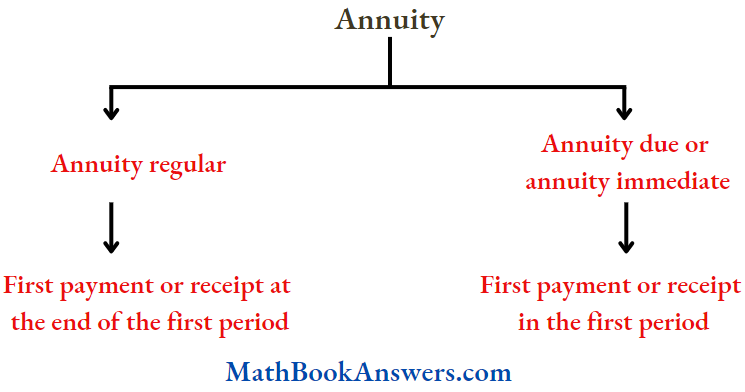
The annuity may be of two types:
Annuity regular: In an annuity, a regular first payment or receipt takes place at the end of the first period. Consider the following table:
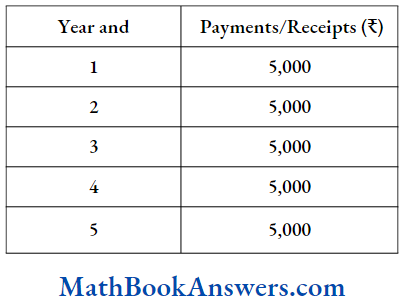
Annuity Due or Annuity Immediate: When the first receipt or payment is made today (at the beginning of the annuity) it is called annuity due or annuity immediate. Consider the following table:

Annuity Regular Or Annuity Ordinary – Formulae
To Find Future Value Amount
⇒ \(S=A\left[\frac{(1+i)^n-1}{r}\right] \times 100 \mathrm{~m} .\)
Where S = Amount of an Annuity
A = Value of each installment
R = rate of interest
M = No. of conversion periods in a year
N = m.t = No. of in statements made in t yrs.
⇒ \(\mathrm{i}=\frac{r}{100 \mathrm{~m}}\) = Rate of interest of one conversion Period
To find the Present Value for an Ordinary Annuity
PV = Present value \(=\mathrm{A}\left[\frac{1-(1+i)^{-n}}{i}\right]\)
Annuity Immediate Or Due – Formulae
To find the Future Value Amount
FV = Amount s = \(\mathrm{A}\left[\left\{\frac{(1+i)^{n+1}-1}{r}\right\} \times 100 m-1\right]\)
Present value of annuity due or annuity immediate Present value of annuity due or immediate for n years is the same as an annuity regular for (n – 1] years plus an initial receipt or payment at the beginning of the period.
Calculating the present value of the annuity due involves two steps.
Step 1: Compute the present value of the annuity as if it were an annuity regular for one period short.
Step 2: Add the initial cash payment or receipt to the Step 1 value.
CA Foundation Maths Solutions For Chapter 4 Sinking Fund
It is the fund credited for a specified purpose by way of a sequence of periodic payments over some time at a specified interest rate. Interest is compounded at the end of every period. The size of the sinking fund deposit is computed from A = P.A(n, i) where A is the amount to be saved, P is the periodic payment, and n is the payment period.
Solved Example
Question 1. How much amount is required to be invested every year to accumulate ₹300000 at the end of 10 years if interest is compounded annually at 10%?
Solution:
Here A = 3,00,000
n = 10
i = 0.1
Since A = P.A (n, i)
300000 = P.A.(10, 0.1)
= P x 15.9374248
⇒ \(\mathrm{P} \quad=\frac{3,00,000}{15.9374248}=₹ 18,823.62\)
This value can also be calculated by the formula of the future value of annuity regular. We know that
⇒ \( A(n \text { i }) =A\left[\frac{(1+i)^n-1}{i}\right]\)
⇒ \( 300000 =A\left[\frac{(1+0.1)^{10}-1}{0.1}\right] \)
300000= A x 15.9374248
⇒ \(\text { A } \quad=\frac{3.00,000}{15.9374248}=₹ 18,823.62\)
Chapter 4 Time Value Of Money Step-By-Step Solutions
CA Foundation Maths Solutions For Chapter 4 Leasing
Leasing is a financial arrangement uniter which the owner of the asset (lessor) allows the user of the asset (lessee) to use the asset for a defined period (lease period) for a consideration (lease rental) payable over a given period, This is a kind of taking an asset on rent.
Solved Examples:
Question 1. ABC Ltd. wants to lease out an asset costing ₹3,60,000 for five years. It has fixed a rental of ₹1,05,000 per annum payable annually starting from the end of the first year, Suppose the rate of interest is 14% per annum compounded annually on which money can be invested by the company. Is this agreement favorable to the company?
Solution:
First, we have to compute the present value of the annuity of ₹1,05,000 for five years at the interest rate of 14% p.a. compounded annually.
The present value V of the annuity is given by
V = A.P (n, i)
= 1,05,000 xP(5, 0.14)
= 1,0,5000 x 3.43308 = ₹3,60,473.40
which is greater than the initial cost of the asset and consequently leasing is favourable to the lessor.
Question 2. A company is considering the proposal of purchasing a machine either by making a full payment of ₹4,000 or by leasing it for four years at an annual rate of ₹1,250. Which course of action is preferable if the company can borrow money at 14% compounded annually?
Solution:
The present value V of the annuity is given by
= A.P (n, i)
= 1,250 x p (4, 0.14)
= 1,250 x 2.91 371 = ₹3,642.11
which is less than the purchase price and consequently leasing is preferable
CA Foundation Maths Solutions For Chapter 4 Capital Expenditure (investment decision)
Capital expenditure means purchasing an asset (which results in outflows of money) today in anticipation of benefits (cash inflow) that would flow across the life of the investment. For making investment decisions we compare the present value of cash outflow and the present value of cash inflows. If the present value of cash inflows is greater than the present value of cash outflows decision should be in favor of investment. Let us see how we make capital expenditure (investment) decisions.
Solved Examples:
Question 1. A machine can be purchased for ₹50000. The machine will contribute ₹12000 per year for the next five years. Assume borrowing cost is 10% per annum compounded annually. Determine whether the machine should be purchased or not.
Solution:
The present value of annual contribution
= A.P(n, i)
= 12,000 x P(5, 0.10)
= 12,000 x 3.79079
= ₹45,489.48
which is less than the initial cost of the machine. Therefore machine must not be purchased.
Question 2. A machine with a selling life of seven years costs f1 0,000 while another machine with a useful life of live years costs (111,001). The first machine saves labor expenses of ₹1,900 annually and the second one saves labor expenses of ₹2,200 annually. Determine the preferred course of action. Assume the cost of borrowing as 10% compounded per annum.
Solution:
The present value of annual cost savings for the first machine
= ₹1,900 KP (7, 0.10)
= ₹ 1,900 ⇔ 4.86842
= ₹9,249.99
= ₹9,250
The cost of the machine being ₹10,000 it costs more by ₹750 than it saves in terms of labour cost.
The present value of annual cost savings of the second machine
= ₹2,200 xP(5, 0.10)
= ₹2,200 x 3.79079
= ₹8,339.74
The cost of the second machine is ₹8,000 effective savings in labor cost is ₹339.74. Hence the second machine is preferable.
CA Foundation Maths Solutions For Chapter 4 Valuation Of Bond
A bond is a debt security in which the issuer owes the holder a debt and is obliged to repay the principal and interest. Bonds are generally issued for a fixed term longer than one year.
Solved Example
Question 1. An investor intends to purchase a three-year ₹1,000 par value bond having a nominal interest rate of 10%. At what price the bond may be purchased now if it matures at par and the investor requires a rate of return of 14%?
Solution:
Present value of the bond
⇒ \(=\frac{100}{(1+0.14)^1}+\frac{100}{(1+0.14)^2}+\frac{100}{(1+0.14)^3}+\frac{1,000}{(1+0.14)^3}\)
= 100 x 0.87719 + 100 x 0.769467 + 100 x 0.674 972 + 1,000 x 0.674972
= 87.719+ 76.947+ 67.497+ 674.972 = ₹907.125
Thus, the purchase value of the bond is ₹907.125
CA Foundation Maths Solutions For Chapter 4 Perpetuity
Perpetuity is an annuity in which the periodic payments or receipts begin on a fixed date and continue indefinitely or perpetually. Fixed coupon payments on permanently invested (irredeemable) sums of money are prime examples of perpetuities.
Solved Example
Question 1. Ramesh wants to retire and receive ₹3,000 a month. He wants to pass this monthly payment to future generations after his death. He can earn an interest of 8% compounded annually. How much will he need to set aside to achieve his perpetuity goal?
Solution:
R = ₹3,000
i = 0.08/12 or 0.00667
Substituting these values in the above formula, we get
⇒ PVA =\(\frac{3,000}{0.00667}\)
= ₹ 4,49,775
If he wanted the payments to start today, he must Increase the size of the funds to handle the first payment. This is achieved by depositing H52,775 of normal perpetuity received in the beginning = 4,49,775 + 3,000 which provides the immediate payment of ₹3,000 and leaves ₹4,49,775 in the fund to provide the future ₹3,000 payments.
CA Foundation Maths Solutions For Chapter 4 Growing Perpetuity
A stream of cash flows that grow at a constant rate forever is known as growing perpetuity.
The formula for determining the present value of growing perpetuity is as follows:
⇒ \(\text { PVA }=\frac{R}{(1+i)^1}+\frac{R(1+g)}{(1+i)^2}+\frac{R(1+g)^2}{(1+i)^3}+\ldots \ldots \ldots . . .+\frac{R(1+g)^{\infty}}{(1+i)^{\infty}}\)
⇒ \(\sum_{n=1}^{\infty} \frac{R(1+g)^{n-1}}{(1+i)^n}\)
⇒ \(=\frac{R}{i-g}\)
Solved Example:
Question 1. Assuming that the discount rate is 7% per annum, how much would you pay to receive ₹50, growing at 5%, annually, forever?
Solution:
⇒ \(\text { PVA }=\frac{R}{i-g}=\frac{50}{0.07-0.05}=2,500\)
Net Present Value Technique (NPV):
The net present value technique is a discounted cash flow method that considers the time value of money in evaluating capital investments. An investment has cash flows throughout its life, and it is assumed that a rupee of cash flow in the early years of an investment is worth more than a rupee of cash flow in a later year.
The net present value method uses a specified discount rate to bring all subsequent net cash inflows after the initial investment to their present values (the time of the initial investment is year 0).
CA Foundation Maths Solutions For Chapter 4 Determining Discount Rate
Theoretically, the discount rate or desired rate of return on an investment is the rate of return the firm would have earned by investing the same funds in the best available alternative investment that has the same risk.
Many organizations choose to use the overall cost of capital or Weighted Average Cost of Capital (WACC) that an organization has incurred in raising funds or expects to incur in raising the funds needed for an investment.
The net present value of a project is the amount, in current value of rupees, the investment earns after paying the cost of capital in each period.
Net Present Value
Net present value = Present value of cash inflow – Present value of cash outflow
- The steps to calculating net present value are:
- Determine the net cash inflow in each year of the investment.
- Select the desired rate of return discounting rate or Weighted Average Cost of capital.
- Find the discount factor for each year based on the desired rate of return selected.
- Determine the present values of the net cash flows by multiplying the cash flows by respective the discount factors of the respective period called the Present Value (PV) of Cash flows
- Total the amounts of all PVs of Cash Flows
Decision Rule:
If NPV > 0 Accept the proposal.
lf NPV > 0 Reject the proposal
Solved Example:
Question 1. Compute the net present value for n pro|cct with n not Invoslment of 1,00,000 and cash flows year one Is ₹55,000; for year two Is ₹80,000 and for year three Is 15,000. Further, the company’s cost of capital Is 10%.
|PVIF @ 10% for three years are 0.909, 0.020 and 0.751 |
Solution:
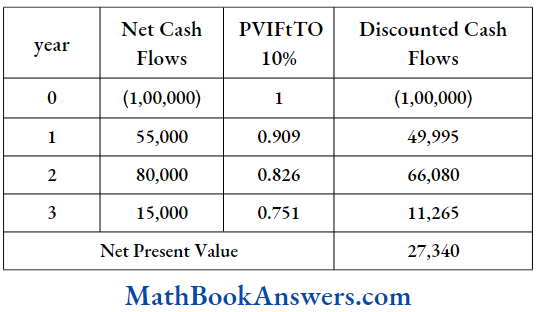
CA Foundation Maths Solutions For Chapter 4 Nominal Rate of Return
The nominal rate is the stated interest rate. If a bank pays 5% annually on a savings account, then 5% is the nominal interest rate. So, if you deposit n00 for 1 year, you will receive in interest.
However, that will probably be worth less at the end of the year than it would have been at the beginning. This is because inflation lowers the value of money.
Nominal Rate of Return – Inflation = Real Rate of Return
Real Rate of Return:
The real interest rate is so named because it states the “real” rate that the lender or investor receives after inflation is factored in; that is, the interest rate that exceeds the inflation rate.
Nominal Interest Rate = Real Interest Rate + Inflation
CA Foundation Maths Solutions For Chapter 4 Effective Rate
It is the actual equivalent annual rate of interest at which an investment grows in value when interest is credited more often than once a year. If interest is paid m times in a year it can be found by calculating:
⇒ \(\mathrm{E}_{\mathrm{i}}=\left(1+\frac{i}{m}\right)^m-1\)
The chief advantage of knowing the difference between nominal, real, and effective rates is that it allows consumers to make better decisions about their loans and investments. A loan with frequent compounding periods will be more expensive than one that compounds annually.
Effective and nominal interest rates allow banks to use the number that looks most advantageous to the consumer. When banks are charging interest, they advertise the nominal rate, which is lower and does not reflect how much interest the consumer would owe on the balance after a full year of compounding. On the other hand, with deposit accounts where banks are paying interest, they generally advertise the effective rate because it is higher than the nominal rate.
CA Foundation Maths Guide For Time Value Of Money
CA Foundation Maths Solutions For Chapter 4 Compound Annual Growth Rate (CAGR)
Compounded Aiuuml Growth Knlc (CAGR) is an IHISIIIORR mill Inverting specific terms for the smoothed in a mulled gain of mi Investnu it over; I gave time. Is not my accounting I r-rin, 1ml remains widely used, particularly in growth Industries or to compare the growth rates of two investments because CAGR dampens the effect or volatility of periodic returns that can render arithmetic means irrelevant. CAGR is often used to describe the growth over some time of some element of the business, for example, revenue, units delivered, registered users, etc.
⇒ \({CAGR}\left(t_0, t_{11}\right)=\left(\frac{V\left(t_n\right)}{V\left(t_0\right)}\right)^{\frac{1}{t_{01-}-t_0}}-1\)
Where V(to) = Beginning Period ; V (tn) = End Period
Solved Example:
Question 1. Suppose the revenues of a company for four years, V(t) in the above formula, have been
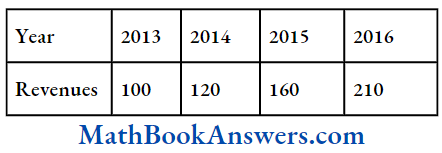
Calculate Compound Annual Growth Rate.
Solution:
tn-to = 2016-2013 =3
The CAGR revenues over the three years from the end of 2013 to the end of 2016 is
CAGR (0, 3) = \(\left(\frac{210}{100}\right)^{\frac{1}{3}}-1=1.2774-=27.74 \%\)
Applications: These are some of the common CAGR applications:
- Calculating average returns of investment funds.
- Demonstrating and comparing the performance of investment advisors.
- Comparing the historical returns of stocks with bonds or with a savings account.
- Forecasting future values based on the CAGR of a data series.
- Analyzing and communicating the behavior, over a series of years, of different business measures such as sales, market share, costs, customer satisfaction, and performance.
Solved Examples:
Question 1. Mr. X invests ₹310,000 every year starting today for the next 10 years suppose the interest rate is 8% per annum compounded annually. Calculate the future value of the annuity:
(given that (1+0.08)10 = 2.15892500)
- 3156454.88
- 3144865.625
- 3156554.88
- None of these
Solution:
⇒ \(A=F V=R\left[\left\{\frac{(1+i)^{n+1}-1}{r}\right\} \times 100 \mathrm{~m}-1\right]\)
⇒ \(=10,000\left[\frac{(1+0.08)^{10+1}-1}{8} \times 100-1\right]\)
Question 2. The present value of an annuity of 33,000 for 15 years at 4.5% p.a. C.l. is: [Given that (1.045)15 = 1.935282]
- 323,809.67
- 332,218.67
- 332,908.67
- None of these
Solution:
(2)
⇒ \( P V=R\left|\frac{1-(1+1)^{-11}}{1}\right|\)
⇒ \( =3000\left\lceil\frac{1-(1.045)^{-13}}{0.045}\right\rceil\)
Question 3. A machine can be purchased for ₹50,000. The machine will contribute Rs. 2,000 per year for five years. Assume the borrowing cost is 10% per annum. Determine whether the machine should be purchased or not:
- Should be purchased
- Should not be purchased
- Can’t say about the purchase
- None of the above
Solution:
(2)
⇒ \(P V=R\left[\frac{1-(1+i)^{-n}}{i}\right]\)
⇒ \(P V=12000\left[\frac{1-(1.10)^{-5}}{0.10}\right]\)
= ₹45,489.44
It should not be purchased
Question 4. How much amount is required to be invested every year so as to accumulate ₹3,00,000 at the end of 10 years? If interest is compounded annually at 10%? (Given (1.1)⇔=2.5937)
- ₹18,823.65
- ₹18,828.65
- ₹18,832.65
- ₹18,882.65
Solution:
(1)
⇒ \(\mathrm{FV}=\mathrm{R}\left[\frac{(1+i)^n-1}{r} \times 100 \mathrm{~m}\right]\)
⇒ \(3,00,000=\mathrm{R}\left[\frac{\left(1+\frac{10}{100}\right)^{10}-1}{10} \times 100\right]\)
⇒ \(\mathrm{R}=\frac{3.00,000}{\left|\frac{(1.1)^{10}-1}{10} \times 100\right|}=₹ 18,823.65\)
Question 5. A company is considering the proposal of purchasing a machine either by making a full payment of ₹4,000 or by leasing it for four years at an annual rate of ₹ 1,250. Which course of action is preferable, if the company can borrow money at 14% compounded annually? (Given: (1.14) = 1.68896)
- Leasing is preferable
- Should be purchased
- No difference
- None of these
Solution:
(1)
₹4000 = Present value
⇒ \(PV=R\left[\frac{1-(1-i)^{-n}}{r} \times 100\right]\)
⇒ \(=1250\left[\frac{1-\left(1+\frac{14}{100}\right)^{-4}}{14} \times 100\right]=₹ 3642.14\)
It is less than the real cost price.
Leasing is better
(1) is correct
Question 6. Vipul purchases a car for ₹5,50,000, nets, I loan of ₹5,00,000 at IS% p.a. from; i hank and balance ISO,000 ho pays as ₹ time of purchase, lie has to pay the whole amount of loan in 12 equal monthly Instalments with Interest starting from the end of the first month, The money he has to pay at the end of every month is:
(Given (1.0125)’₹’= 1.16075452)
- ₹45,130.43
- ₹45,230.43
- ₹45,330.43
- None of these
Solution:
Loan value = ₹5,00,000 = PV
R = Instalment value =?
⇒ \(P V=R\left[\frac{1-(1+i)^{-11}}{i}\right]\)
⇒ \(5,00,000=R\left[\frac{1-\left(1+\frac{15}{1200}\right)^{-12}}{i}\right]\)
R = ₹45,130.43
Question 7. A company establishes a sinking fund to pay for ₹2,00,000 debt maturing in 20 years. Contributions to the fund are to be made at the end of every year. Find the amount of each annual deposit interest is 5% per annum:
- ₹6,142
- 6,049
- ₹6,052
- 6,159
Solution:
(2)
₹ 200,000
⇒ \(200,000=R\left[\frac{(1+5 / 100)^{-20}-1}{5} \times 100\right] \)
⇒ \( R=\frac{2,00,000 \times 5}{\left.\mid(1.05)^{20}-1\right) \mid \times 100}\)
⇒ \(=₹ 6049 \text { (Approx. })\)
Question 8. A company may obtain a machine either by leasing it for 5 years (useful life) at an annual rent of ₹2,000 or by purchasing the machine for ₹8,100. If the company can borrow money at 18% per annum, which alternative is preferable?
- Leasing
- Purchasing
- can’t say
- None of these
Solution:
(1) PV = ₹8100
It is an ordinary annuity
= ₹ 6254.34
It is less than ₹8100. (1) Is correct
Question 9. A sinking fund is created for redeeming debentures worth ₹5 lacs at the end of 25 years. How much provision needs to be made out of profits each year provided sinking fund investments can earn interest at 4% p.a.?
- 12,006
- 12,040
- 12,039
- 12,035
Solution:
⇒ \(₹ 5,00,000=R\left\lceil\frac{(1.04)^{25}-1}{0.04}\right]\)
R = 12006.00 approx
Question 10. Future value of an ordinary annuity:
- \((..) $A(n, 1)=A\left(\frac{(1+1)^n-1}{1}\right)\)
- \(A(n, i)=A\left(\frac{(1+1)^n+1}{i}\right)\)
- \(A(n, i)=A\left(\frac{1-(1+1)^n}{1}\right)\)
- \( A(n, i)=A\left(\frac{(1+i)^n-1}{\left((1+i)^n\right.}\right)$\)
Solution:
(1) It is Formulae.
Question 11. Paul borrows ₹20,000 on condition that repay it with compound interest at 5% p.a. in an annual installment of ₹2,000 each. Find the number of years in which the debt would be paid off.
- layers
- 12years
- 14years
- 15years
Solution:
(4)
⇒ \(20,000=2000\left[\frac{1-\left(1+\frac{5}{10}\right)^{-1}}{5} \times 100\right]\)
⇒ \(\text { Or } 10=\left[\frac{1-(1.05)^{-t}}{5}\right] \times 100 \)
⇒ \(\text { Or } \frac{10 \times 5}{100}=1-(1.05)^{-t}\)
Or 0.5-1= (1.05)-t
Or 0.5-1= -(1.05)-t
⇒ \({Or}(1.05)^t=\frac{1}{0.5}=2\)
Or \( t =\frac{\log 2}{\log (1.05)}=15$ yrs. approx.\)
Question 12. Find the value of an annuity of ₹1,000 payable at the end of each year for 10 years. If the rate of interest is 6% compounding per annum. (given (1.06)-111 = 0.558):
- ₹7,360
- ₹8,360
- ₹12,000
- None of these
Solution:
(1) Is correct
⇒ \(P V=1000\left[\frac{1-(1.06)^{10}}{0.06}\right] \quad=₹ 7360\)
Question 13. The future value of an annuity of ₹ 5,000 is made annually for 8 years at an interest rate of 9% compounded annually (Given that (1.09)8 = 1.99256_____.
- ₹55,142.22
- ₹65,142.22
- ₹65,532.22
- ₹57,425.22
Solution:
(1)
⇒ \(FV=5000\left[\frac{(1.09)^8-1}{0.09}\right]=₹ 55,142.22\)
Question 14. How much amount is required to be invested every year to accumulate ₹ 6,00,000 at the end of 10, the year, if interest is compounded annually at a 10% rate of interest?
- ₹37,467
- ₹37,476
- ₹37,647
- ₹37,674
Solution:
(3)
Let the amount invested annually be = R
⇒ \(R=\frac{6,00,000}{\left|\frac{\left(1+\frac{1}{180}\right)^{10}-1}{10} \times 100\right}=₹ 37,647 \text { (approx.) }\)
Question 15. The future value of an annuity of ₹1,000 annually for 5 years at the rate of interest of 14% compound annually is
- ₹5610
- ₹6610
- ₹6160
- ₹5160
Solution:
(2)
⇒ \( \mathrm{FV}=1000\left[\frac{\left(1+\frac{14}{100}\right)^5-1}{14} \times 100\right]\)
= ₹6610.104
Question 16. Suppose your mon decides to gift you ₹10,000 every year starting from today for the next sixteen years. You deposit this amount in a bank as and when you receive it and get an 8.5% per annum interest rate compounded annually. What is the present value of this money: (given that P (15,0.085) = 8.304236)
- 83,042
- 90,100
- 93,042
- 10,100
Solution:
(3)
⇒ \( PV=10,000\left[\frac{1-\left(1+\frac{8.5}{10}\right)^{(-16-1)}}{8.5} \times 100+1\right]\)
= 10,000 (8.304236+1) = ₹93,042
Question 17. The future value of an annuity of ₹1500 made annually for 5 years with an interest rate of 10% compounded annually is_
- 9517.56
- 9157.65
- 9715.56
- 9175.65
Solution:
(2)
⇒ \(F V=1500\left[\frac{\left(1+\frac{10}{100}\right)^5-1}{10} \times 100\right]=₹ 9157.65\)
CA Foundation Maths Solutions For Chapter 4 Exercise – 3
Question 1. The present value of an annuity of ₹3000 for 15 years at 4.5% p.a Cl is
- ₹23.809.41
- ₹32,214.60
- ₹3 2,908.41
- None of these
Solution:
(2) Since no info is given, by default it is annuity regular
Present value =\(=A\left[\frac{1-(1+i)^{-n}}{i}\right]\)
A = Periodic Payment 1 = interest n = no. of yrs.
⇒ \(\text { P.V. }=3000\left[\frac{1-(1.045)^{-15}}{0.045}\right]\) = ₹32,214.60 0.045
Question 2. The amount of an annuity is certain of V150 for 12 years at 3.5% p.a C. I am
- ₹2.190.28
- ₹290.28
- ₹2,180.28
- None of these
Solution:
(1) v Amount of annuity certain will be the future value
⇒ \( \text { F.V. }=A\left[\frac{(1+i)^n-1}{i}\right]\)
⇒ \(150\left[\frac{(1.035)^{12}-1}{0.035}\right]=₹ 2190.28\)
Question 3. A loan of ₹ 1 0,000 is to be paid back in 30 equal installments. The amount of each installment to cover the principal and at 4% p.a Cl is
- ₹587.87
- ₹587
- ₹578.30
- None of these
Solution:
(3) loan amount is given i.e. P.V of annuity regular is given
⇒ \(\text { P. V }=A\left[\frac{1-(1+i)^{-n}}{i}\right]\)
⇒ \(10,000=A\left[\frac{1-(1.04)^{-30}}{0.04}\right]\)
Therefore, A=₹ 578.30
Question 4. A = ₹1,200 n = 12 yearsi = 0.08, V = ?
Using the formula\(V=\frac{A}{i}\left[1-\frac{1}{(1+i)^n}\right]\) value of v will be
- ₹3,039
- ₹3,990
- ₹9930
- ₹9043.30
Solution:
(4)
⇒ \( \mathrm{V} =\frac{A}{i}\left[1 \frac{-1}{(1+i)^n}\right]\)
⇒ \(\mathrm{V} =\frac{A}{i}\left[1-(1+i)^{-n}\right]\)
⇒ \(\mathrm{V} =1200\left[\frac{1-(1.08)^{-12}}{0.08}\right]\)
V = ₹9043.30
Question 5. a = ₹100 n = 10, /= 5% find the FV of annuity. Using the formula FV = a {(1 + i)” – l)/i, FV is equal to
- ₹1,258
- ₹2,581
- ₹1,528
- None of these
Solution:
⇒ \( { (1) } F . V=a =100\left[\frac{(1.05)^{10}-1}{0.05}\right]\)
⇒ \( =₹ 1258\)
Question 6. If the amount of an annuity after 25 years at 5% p.a C.1 is ₹50,000 the annuity will be
- ₹1,406.90
- ₹1,047.62
- ₹1,146.90
- None of these
Solution:
[2] F.V given = 50,000
⇒ \(\text { F.V }=\mathrm{A}\left[\frac{(1+i)^n-1}{i}\right]\)
⇒ \(50,000 =\mathrm{A}\left[\frac{(1.05)^{25}-1}{0.05}\right]\)
A = ₹1047.62
Question 7. An annuity of ₹100 amounts to ₹3137.12 at 4.5% p.a C. I. The number of years will be
- 25 years (appx.)
- 20 years (appx.)
- 22 years
- None of these
Solution:
(2) F.V = ₹3137.12 A= 100 I = 0.045 n = ?
⇒ \( F \cdot V=A\left[\frac{(1+i)^n-1}{i}\right]\)
⇒ \(\frac{(F . V)}{A} \mathrm{i}+1=(1+\mathrm{i})^{\prime \prime}\)
Question 8. A company borrows ₹10,000 on condition to repay it with compound interest at 5% p.a by annual installments of ₹1000 each. The number of years by which the debt will be clear is
- 14.2 years
- 10 years
- 12 years
- None of these
Solution:
(1) P.V or annuity = loan amount = 10,000
⇒ \(P \cdot V=A\left[\frac{1-(1+i)^{-n}}{i}\right]\)
⇒ \( \frac{10.000}{1000}(0.05)=1-(1+i)^{-n}\)
⇒ \((1+i)^n=\frac{1-10.000(0.05)}{1000}\)
(1 + i)n =0.5
(l.05)n = 0.5
n = 14.2 yrs
Question 9. Mr. X borrowed ₹5,120 at 12 % % p.a C.I. At the end of 3 years, the money was repaid along with the interest accrued. The amount of interest paid by him is
- ₹2,100
- ₹2,170
- ₹2,000
- None of these
Solution:
(2) Principal = 5120 Rate =12.5% Time: 3 yrs
Compound Interest = P [1 + i)”- 1]
= 5120 [(1+0.125)3 – 1]
= 5120 [(1.125P-1]
C.I = 2170
Interest paid by him is 2170
Question 10. Mr. Paul borrows ₹20,000 on condition that repay it with C.I. at 5% p.a in annual installments of ₹2000 each. The number of years for the debt to be paid off is
- 10 years
- 12 years
- 11 years
- 14.2 years
Solution:
10. (d) P.V of annuity = loan amount = 20,000
⇒ \( \text { P.V }=A\left[\frac{1-(1+i)^{-n}}{i}\right]\)
⇒ \(20,000=2000\left[\frac{1-(1.05)^{-n}}{0.05}\right]\)
0.5=1-(1.05)-n
(1.05)n = 0.5
n = 14.2 yrs
Question 11. A person invests ₹500 at the end of each year with a bank that pays interest at 10% p.a C.I. annually. The amount standing to his credit one year after he has made his yearly investment for the 12th time is.
- ₹11,761.36
- ₹10,000
- ₹12,000
- None of these
Solution:
(1) The future value of the annuity after 12 years will be
⇒ \( F .V =A\left[\frac{(1+i)^n-1}{i}\right]\)
⇒ \(=500\left[\frac{(1.1)^{12}-1}{0.1}\right]\)
they are asking for one year after the 12th payment interest will be given at 10% but no 500 is deposited as the year has not ended.
Interest on @ 10% will be added
⇒ \( 10692.14188 \times \frac{10}{100}=1069.2141\)
=₹ 11761.36
Question 12. The present value of an annuity of ₹5,000 per annum for 12 years at 4% p.a C.I. annually is
- ₹46,000
- ₹46,850
- ₹15,000
- 46925.40
Solution:
⇒ \( {P.V }=A\left[\frac{1-(1+i)^{-7}}{i}\right] \)
⇒ \(5000\left[\frac{1-(1.04)^{-12}}{0.04}\right]\)
Question 13. A person desires to create a fund to be invested at 10% Cl per annum to provide for a prize of ₹300 every year. Using V = a/I find V and V will be
- ₹2,000
- ₹2,500
- ₹3,000
- None of these
Solution:
(3) V=\frac{a}{1}=\frac{300}{0.1}=₹ 3000
Question 14. What sum should be invested at the end of every year to accumulate an amount of ’796570 at the end of 10 years at the rate of interest 10% compounded annually, (given that A(10;0.1) = 15.9374)
- 40,000
- 4,50,000
- 4,80,000
- 50,000
Solution:
(4) \(R=\frac{796870}{\left|\frac{\left(1+\frac{10}{100}\right)^{10}-1}{10} \times 100\right|}=₹ 50,000\)
Question 15. A person invests at the end of each month @ of interest 6% compounding monthly, find the amount of annuity after the 10th payment:
- 20,456
- 20,156
- 20,256
- 20,356
Solution:
(1) \(F V=2000\left[\frac{\left(1+\frac{6}{1200}\right)^{10}-1}{6} \times 1200\right]=₹ 20,456\)
Tips For Understanding Time Value Of Money In CA Foundation
CA Foundation Maths Solutions For Chapter 4 Exercise 4- Mix Question And Answers
Question 1. A = ₹5,200. R = 5% p.a., T = 6 years, P will be
- ₹2,000
- ₹3.880
- ₹3,000
- None of these
Solution: 1. ₹2,000
Question 2. If P = 1,000, n = 4 years., R = 5% p.a then C. I will be
- ₹215.50
- ₹210
- ₹220
- None of these
Solution: 1. ₹215.50
Question 3. The time in which a sum of money will be doubled at 5% p.a C. I am
- ₹10 years
- 12 years
- 14.2 years
- None of these
Solution: 3. 14.2 years
Question 4. ‘If A = ₹10,000, n = 18yrs., R = 4% p.a C.I, P will be
- ₹4,000
- ₹4,900
- ₹4,500
- 4936.30
Solution: 4. 4936.30
Question 5. The time by which a sum of money would treble itself at 8% p.a C. I am
- 14.28 years
- 14 years
- 12 years
- None of these
Solution: 1. 14.28 years
Question 6. The present value of an annuity of ₹80 a year for 20 years at 5% p.a is
- ₹997 (appx.)
- ₹900
- ₹1,000
- None of these
Solution: 1. ₹ 997 (appx.)
Question 7. A person bought a house paying ₹ 20,000 cash down and ₹4,000 at the end of each year for 25 yrs. at 5% p.a. C.l. The cash-down price is
- ₹75,000
- ₹76,000
- ₹76,375.80
- None of these.
Solution: 3. ₹ 76,375.80
Question 8. A man purchased a house valued at ₹3,00,000. He paid ₹2,00,000 at the time of purchase and agreed to pay the balance with interest at 12% per annum compounded half-yearly in 20 equal half-yearly installments. If the first installment is paid after six months from the date of purchase then the amount of each installment is [Given log 10.6 = 1.0253 and log 31.19 = 1.494]
- ₹8,71 8.45
- ₹8,769.21
- ₹7,893.13
- None of these.
Solution: 1. ₹8,71 8.45
Question 9. The difference between compound and simple interest at 5% per annum for 4 years on ₹20,000 is _____.
- 250
- 277
- 300
- 310
Solution: 4. 310
Question 10. The compound interest on half-yearly rests on ₹10,000 the rate for the first and second years being 6% and for the third year, 9% p.a. is _____.
- 2,200
- 2,287
- 2,285
- None
Solution: 4. None
Question 11. The present value of ₹10,000 due in 2 years at 5% p.a. compound interest when the interest is paid every year is ______.
- 9,070
- 9,000
- 9,061
- None
Solution: 1. 9,070
Question 12. The present value of ₹10,000 is due in 2 years at 5% p.a. compound interest when the interest is on a half-yearly basis _____.
- 9,070
- 9,069
- 9,061
- None
Solution: 3. 9,061
Question 13. lohn son loft 1,00,000 with the direction that it should be divided in such a way that his minor sons Tom, Dick, and Harry aged 9, 12, and 15 years should each receive equally after attaining the age of 25 years. The rate of interest is 3.5%, how much does each son receive after getting 25 years old?
- 50,000
- 51,994
- 52,000
- None
Solution: 4. None
Question 14. In how many years will a sum of money double at 5% p.a. compound interest?
- 15 years 3 months
- 14 years 2 months
- 14 years 3 months
- 15 years 2 months
Solution: 2. 14 years 2 months
Question 15. In how many years does a sum of money treble at 5% p.a. compound interest payable every year?
- 18 years 7 months
- 18 years 6 months
- 18 years 8 months
- 22 years 3 months
Solution: 15. 22 years 3 months
Question 16. A machine depreciates at 10% of its value at the beginning of a year. The cost and scrap value realized at the time of sale being and respectively. For how many years the machine was put to use?
- 7 years
- 8 years
- 9 years
- 10 years
Solution: 3. 9 years
Question 17. A machine’s worth is depreciated at 15% on its opening value each year. When its value would reduce to 2,00,000?
- 4 years 6 months
- 4 years 7 months
- 4 years 5 months
- 5 years 7 months approximately
Solution: 4. 5 years 7 months approximately
Question 18. A machine’s worth is depreciated at 15% of its opening value each year. When its value would reduce by 90%?
- 11 years 6 months
- 11 years 8 months
- 11 years 7 months
- 14 years 2 months approximately
Solution: 4. 14 years 2 months approximately
Question 19. Alibaba borrows lakhs Housing Loan at 6% repayable in 20 annual installments commencing at the end of the first year. How much annual payment is necessary?
- 52,420
- 52,419
- 52,310
- 52,320
Solution: 3. 52,310
Question 20. A sinking fund is created for redeeming debentures worth lakhs at the end of 25 years. How much provision needs to be made out of profits each year provided sinking fund investments can earn interest at 4% p.a.?
- 12,006
- 12,040
- 12,039
- 12,035
Solution: 1. 12,006
Question 21. A machine costs 5,20,000 with an estimated life of 25 years. A sinking fund is created to replace it with a new model at a 25% higher cost after 25 years with a scrap value realization of 25000. what amount should be set aside every year if the sinking fund investments accumulate at 3.5% compound interest p.a.?
- 16,000
- 16,500
- 16,050
- 16,005
Solution: 3. 16,050
Question 22. Raja aged 40 wishes his wife Rani to have ₹ 40 lakhs at his death. If his expectation of life is another 30 years and he starts making equal annual investments commencing now at 3% compound interest p.a. how much should he invest annually?
- 84,448
- 84,450
- 84,449
- 84,080
Solution: 4. 84,080
Question 23. Appu retires at 60 years receiving a pension of 14,400 a year paid in half-yearly installments for the rest of his life after reckoning his life expectation to be 13 years and that interest at 4% p.a. is payable half-yearly. What single sum is equivalent to his pension?
- 1,45,000
- 1,44,900
- 1,44,800
- 1,44,700
Solution: 2. 1,44,900

